 Grace Wickerson
Grace WickersonHome Institution: Rice University
Status: Sophomore, Expected Graduation Date: May 2020
Field of Study: Materials Science and Nanoengineering with Minors in Environmental Studies and Global Health Technologies
Host Lab in Japan: The University of Tokyo – Dept. of Mechanical Engineering, Maruyama-Chiashi Laboratory
Host Professor: Prof. Shigeo Maruyama
Research Project Abstract & Poster: Synthesis and Characterization of Horizontally-Aligned Nanotube Heterostructures (PDF)
Why Nakatani RIES?
Going back to Japan has been a dream of mine ever since my exchange program in Kagoshima several years ago. Japan was the first place I traveled to outside of the United States. It was also one of the first places I traveled to without my parents. Everywhere I went I was met with unfamiliarity; of the people, the food, the culture, and especially the language. While initially jarring, over the six weeks I slowly learned ways to thrive far outside of my comfort zone, especially as I grew more familiar and more in love. I long to catch up with my host family who took such great care of me while I was abroad as well as my school friends who I have kept in contact with and continued to practice Japanese with (and teach English!). I also would like to explore the island of Honshu, as during my time in Japan I solely traveled around Kyushu. I am curious to learn more about what it is like to live in one of Japan’s mega-cities like Tokyo and compare my experience with living in a smaller city like Kagoshima.
The ability to collaborate with people from all over the globe is something that I want to develop. Solving global problems requires diverse thought and international teams which enable new perspectives and solutions. By engaging in the Nakatani RIES Fellowship, I will be able to personally and professionally grow as a globally-minded researcher and engineer, developing the skills I need to work with people who might not have the same experiences as me or speak the same language. I’m excited for a challenging summer of self-discovery, challenging but innovative research, and exploration!
Goals for the Summer
- Improve my Japanese language skills, start working towards professional proficiency
- Dive deep into my research project, learn a lot, and develop skills that can be applied to future diverse working environments
- Make friends with the other Nakatani Fellows and people in my research lab
- Explore as many parts of my host city and beyond as possible
Meaning of Nakatani RIES: Post-Program
What an amazing experience…there are often no words but those of gratitude that I have for the Nakatani Foundation and Rice University for making this opportunity possible. The opportunity to spend three months in another country doing scientific research is something that many science and engineering undergraduates don’t really get to have. The Nakatani Foundation also takes such good care of us, treating us to amazing cultural experiences, food (oh my gosh…so much food), and networking opportunities with Japanese researchers and Japanese undergraduates. I valued every moment of my summer, and made sure to not take any moment for granted.
Research Internship and Lab Group Overview
My research this summer was focused on the synthesis and characterization of boron nitride coated horizontally aligned carbon nanotubes (HACNTs). To synthesize the nanotubes, I utilized photolithography and vacuum deposition to make the substrate and then chemical vapor deposition to synthesis the HACNTs and coat the tubes in boron nitride. To characterize, I learned scanning electron microscopy, atomic force microscopy, and Raman Spectroscopy to confirm the coating and then did one of two cross-section methods of the sample to study the coating morphology in transmission electron microscopy. This project was actually entirely new to me, and many of the techniques I learned throughout the summer. While learning all these techniques in a combination of Japanese and English was a little difficult, it was a worthwhile experience. I enjoyed getting to work closely with carbon nanotubes and would like to continue working with these materials in the future, potentially integrating them with my other love, conjugated polymers. Despite its ups and downs and many schedule changes, the research only further validated my desire to go to graduate school, as every day I was excited to get to work on my project and discover something new.
The Maruyama-Chiashi lab was very collaborative, with most people at any given time willing to stop what they were doing to help. I had people take off whole afternoons to take me to the cleanroom to make a sample, and then do that process again the next day when that first sample didn’t work. I worked closely with one of the assistant professors in the lab, Dr. Rong Xiang, and he made sure to always be available when needed either through email or just by stopping at his desk. Maruyama-sensei was also around for a lot of my summer internship, and he was helpful for talking about parts of my project even if just in casual conversation. My lab seemed to have a big separation between “work” life and “social” life, meaning I didn’t hang out with the lab on a regular basis, but we still had some fun lab party’s and I did go out with a few people in my lab a couple times during the internship.
Daily Life in Japan
Depending on the day, I would get up sometime between 8 and 9 am to get dressed and make breakfast. I would then commute to work which would take about fifty minutes to an hour. The commute was long but worth it because I had my own apartment. Once I finished with work for the day, I would either head home to cook dinner or go out to dinner at a vegetarian/vegan restaurant with friends before enjoying the city. I usually went out at least once or twice a week, sometimes alone and sometimes with my friends who were exchange students or undergraduate summer interns in the area.
Every weekend, I was either traveling around the Tokyo area or traveling around Japan. I visited a ton of Tokyo’s neighborhoods, from the most well-known neighborhoods like Akihabara and Shibuya to more hipster neighborhoods like Koenji and Shimokitazawa. Around Japan, thanks for my rail pass and creative use of local trains, I was able to visit Nikko, Osaka, Nara, Kyoto, Shikoku, Naoshima, Fukuoka, Hiroshima, and Kagoshima.
- My favorite experience in Japan was… hard to choose, but had to be seeing my host family and friends in Kagoshima, Japan again
- Before I left for Japan I wish I had… made more plans as to where I wanted to go, especially places “off the beaten track”
- While I was in Japan I wish I had … practiced Japanese more frequently
Excerpts from Grace’s Weekly Reports
- Week 01: Arrival in Japan
- Week 02: Trip to Mt. Fuji Lakes
- Week 03: Noticing Similarities, Noticing Differences
- Week 04: First Week at Research Lab
- Week 05: Cultural Analysis – Life in Japan
- Week 06: Cultural Analysis – In the Lab
- Week 07-08: Overview of Mid-Program Meeting & Research Host Lab Visit
- Week 09: Research in Japan vs. Research in the U.S.
- Week 10: Reflections on Japanese Language Learning
- Week 11: Interview with a Japanese Researcher
- Week 12-13: Final Week at Research Lab
- Final Report
- Follow-on Project
- Tips for Future Participants
Week 01: Arrival in Japan
It’s crazy to imagine that a week has already gone by in Tokyo, and think back on all that I experienced in really just a few short days (including all the pain and soreness I’ve felt in my legs and feet after all that walking and stair climbing). From pre-departure orientation to now has equally been a whirlwind of the senses as well as an arduous climb to the end as a result of jetlag, being in a new place, culture, food environment, etc, and again soreness (I haven’t walked this much in a loooooooong time).
Overview of Pre-Departure Orientation
I’m so glad that we had pre-departure orientation before coming to Japan because I feel like it was a nice transition from what would be our “normal lives” per se and our “Japan lives”. Even just getting to know and bond with the other U.S. fellows was immensely helpful, especially since I had to sit with them for thirteen and a half hours on plane. From late night Whataburger runs (classic) to watching anime (getting prepped for Japan already), it was great to get to know the other Nakatani Fellows as people rather than just name, photos and majors on a website and start forming bonds with them that make the transition to Tokyo far easier even if they’re sometimes a bit of an English-speaking crux I get to lean on.
Beyond just getting to know the other fellows, I really enjoyed getting almost a crash course in going abroad to Japan. On Thursday for example, we got to hear from previous NanoJapan Participants and Nakatani Fellows and learn from their experiences. I definitely think this was one of the more helpful discussions for me at least because while there’s always fellow blogs to read, it’s far different having that physical person before you telling you about their experiences and being able to connect with their emotions as they described both their struggles and their triumphs. From Ajay sleeping overnight in a pizza shop because he missed the last train to Nickolas describing his experiences with Japanese students inviting him to go to a bathhouse after just meeting him to Alena describing her experiences spending time with her lab mates into the early hours of the morning, everyone had something they remembered most from the program that they look back on with fondness. I also appreciated the strong theme of “just saying yes” that each of the alumni iterated, and how each of their times trying something new helped them learn more about themselves as well as grow and develop relationships with the people around them. I definitely am going to be using that mindset going into the future.
On Friday, I enjoyed getting to learn more about the American and Japanese value systems and how they relate to how we communicate with our lab mates and others we might meet in Japan. As someone who has been to Japan before, it was great getting to talk about what kinds of people we might come across instead of just discussing materialistic things like places we want to visit, shops we want to go to, or food we want to eat (which is difficult for me because I love food). A lot of the Japanese core values were familiar and drew back memories of the time I spent as an exchange student there in high school even if I could never put them to words. I think it was also great exploring not just how there might be different value systems that we might need to be aware of, like the difference between individualistic America and team-oriented and collaborative Japan, but also what similarities we might find with the people we meet, especially out lab mates. I think my favorite comment from that talk is that even if they’re from another culture and speak another language, they’re just big science-loving nerds like me! While I definitely know it’s going to be awkward at first, I’m going to remember that even if we feel like we have nothing in common, I’m remember that we always have research to bring us together.
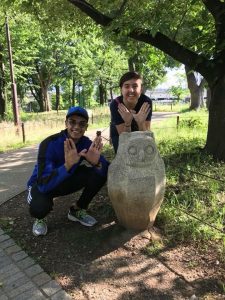
Overview of Week 1 of Orientation
Pre-departure orientation was a series of lab trainings, introductions to Japanese language (with one of my favorite professors Ozaki-sensei), and seminars about research and life abroad, but never could have prepared me fully for being in Tokyo, Japan. The city is just so crazy busy at all hours of the night while at the same time being highly organized and efficient (how?). I think the thing that stood out to me most was how the entire city almost felt like clockwork – with myself feeling very out of place almost like a little stone blocking parts of the machine from functioning properly (see my section about intercultural effectiveness for more).
I really enjoy the structure of the orientation even if the long days are incredibly exhausting. I feel fortunate that this program invests so much time in making sure we have a robust understanding of both Japanese language and the culture/research sides of things and doesn’t just throw us straight into doing research and say “good luck”. Because while I’ve had experiences abroad, this is going to be my first time living alone while abroad, which is incredibly exciting and terrifying at the same time…so I’m trying to be as prepared as I can be.
Language classes are long but focus mostly on conversation skills which I think is important for me because I’d like to not just be the American who expects everyone to struggle through English for me when I would not be able to struggle through Japanese for them. I really enjoy the AJALT professors spending the class mostly speaking in Japanese with just a few instances of English to explain a concept or provide definitions for a new word we come across in our textbook/conversations. This is really helping me to train my ears to hear Japanese and my brain to understand it (love the team effort). Beyond my classes, I try to make sure that I’m speaking with Japanese people that I meet in the konbinis, restaurants, stores, etc in Japanese. While highly minor conversations that are nothing like actually meeting and getting to know people, they’re nice little validators that I’ve learned something over the past year of studying Japanese language. I’m also enjoying trying to read every sign that I can find to improve my hiragana, katakana, and kanji skills, and have really enjoy all the Japan-glish I’ve found around Tokyo.
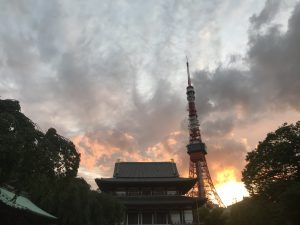
In the afternoons we’ve gotten to do so many cool exploratory activities, both pre-planned and not (J). One of my favorite parts of the week was the visit to the University of Tokyo where I’ll be getting to spend my summer there doing research. Beyond just being a beautiful campus that reminds me of my home university, Rice University, with all of its trees and green spaces, their science and engineering facilities are nothing short of amazing. Just the fact that they have so much equipment available for research use in the Tabata Lab, including not one but several cleanrooms of varying “clean-ness”. And when I went back to University of Tokyo on Sunday for the May Festival, I got to see just how lively the campus was with all the students out and about showing off foods from around the world and performing. I definitely want to find some kind of cool activity to get involved with one campus once I start my research! And of course, I couldn’t finish another visit to the University of Tokyo without finding exactly where my lab was for the summer and geeking out about the cool research posters that decorated the walls.
Other awesome things we got to experience this week were Taiko drumming (which was more of a strenuous workout than I thought it would be) and the Ikebukoro Life Safety Training Center, something I’d heard about many times in my Japanese language classes with Ozaki-sensei as she takes her Rice in Japan students there every year. It was incredible to see just how serious people took their safety in Japan compared to “safety drills” I’m used to in the U.S. which are often treated extremely light-heartedly and often as a joke. Because Japan faces so many extreme conditions like earthquakes and tsunamis – they work hard to make sure as many citizens as possible are ready to handle they disasters head on. I appreciated their emphasis throughout the safety center on the community being ready to support others who are in trouble by training people in emergency medicine (which we sadly didn’t get to experience) and how to use things like fire extinguishers correctly (and warn people that a fire exists with “Kajira!”). And having to go through a simulated earthquake was incredibly terrifying as someone who has always lived in seismically inactive places, but again, increased my respect for Japan’s safety-first mindset.
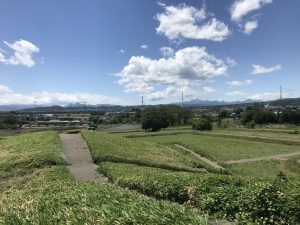
And this isn’t an academic program without some academic stimulation, which we got through talks about the sumo tradition, building supercomputers to detect earthquakes and typhoons (so cool!), and learning about ancient tombs and Buddhist temples in Takasaki. The Takasaki trip was an interesting foray into a new part of history that I’d never heard about, as we learned of the wealthy people who used to live in the area and how their tombs help inform us about how life was life back then. Sasaki-sensei’s enthusiasm on the topic of archaeology was also invigorating and helped keep the day fun even if it was a lot to experience on a Saturday. I also was surprised to learn from Sasaki-sensei how the differences between public and private universities in Japan is almost the opposite of that of America, with public universities in Japan being the ones that are much better funded and so can have professors doing other things than just teaching classes while private universities are less well-funded and so professors like Sasaki-sensei have to teach 8 (!!!) classes a semester. I definitely want to keep this thought in mind as I begin to work at the University of Tokyo and try and figure out what other differences I might find.
Outside of program hours, the other fellows and I are doing as much as we can to experience Tokyo, especially since for many of them these three weeks are all the time we have. Already I’ve gotten to visit Akihabara, experience Shibuya, visit the Meiji Shrine, stroll around Roppongi, wake up and struggle during an early morning run/walk to the Tsukiji Market (love making great decisions), get cultured at the Museum of Modern Art Tokyo, experience the Sanja Matsuri festival in Asakusa (finding the secret side street where they line up with the three jewels for the parade) and explore the neighborhood of Azabu-Juban and the surround Minato area (a place I might not have ever ventured over to had we not been living here). So far sore and happy and just a little bit more intelligent than last week (lol) and excited for what’s to come!
Question of the Week
Even though Japan has such high recycling rates, is there any push to just reduce plastic waste and single use item waste? Using konbinis religiously this past week has made me stop and think about just how much waste I’ve been producing.
- See the section on Trash and Recycling in Japan on our Life in Japan resources page.
Research Project Overview
This summer I will be working on growing carbon nanotubes encased in boron nitride nanotubes in the Maruyama-Chiashi Lab. The two goals of the project as I know them now will be to try different methods of encasing the carbon nanotubes in boron nitrides, aiming for different morphologies of boron nitride, and then once the materials are made to apply them to either a silicon-CNT and perovskite solar cell. Coated carbon nanotubes can have interesting new properties due to the interaction between the coating and the carbon nanotube. For instance, boron nitride has a wide bandgap, making it a near insulating material, while carbon nanotubes have much smaller bandgaps that make them either metallic or semi-conducting depending on the chirality of the tube. Only a few papers have studied boron nitride coating of carbon nanotubes, and most of which if not all have not tried to grow boron nitride nanotubes around the carbon nanotube material, even if the processes exist to do so. Several papers have used CNTs as templates for making aligned boron nitride nanotubes, and their methods could be directly applied to this project. I am excited to learn how to grow materials other than carbon nanotubes and explore what ways I can modify the morphology through altering the growth methods. I am also really excited to get to make some solar cells since I’ve never actually made any devices before, and I really want to move into nanodevice research in the future.
Week 02: Trip to Mt. Fuji Lakes
The second week of the orientation program in Tokyo was just another amazing week of exploring everything the Tokyo area has to offer beyond just touristy shopping centers as well as learn new things about Japanese history. On Monday, we made the journey from Tokyo to the JAMSTEC facility in Yokohoma. My favorite part of the trip was getting to see the cooling rooms of their supercomputer which were, cool…(ha ha). Seeing such massive infrastructure just for maintaining the low temperature necessary for the supercomputer to not overheat was impressive. I also enjoyed getting to see the old models of the computer and how it’s been upgraded throughout the years. The rest of the JAMSTEC facility was maybe not as grand as the cooling plant, but no less interesting. We got to see models of the Earth’s climate, air flow, and currents on a giant digital Earth, discover how sensors implanted deep on the sea floor are helping Japan to better predict earthquakes and tsunamis, get a fascinating guest lecture from Dr. Sato about life in the deep sea, and even learned about JAMSTEC’s ship craft that are helping us explore the deep sea, where we “dug deep” into drilling technology that is helping JAMSTEC sample the Earth’s crust. Growing up in Florida, I’ve always had a deep appreciation for marine science and research as the ocean was basically my background. I even interned at a marine science research center in my hometown at one point. So, getting to be in a similar facility in Japan brought back fond memories. I also have great respect for JAMSTEC’s focus on not just research to increase basic understanding of the ocean world that surrounds Japan but also research to develop engineering controls that can ensure the safety of the Japanese people.
After this adventure, we were joined by Dr. Tsukakoshi , Director of the Information Systems Department, and Dr. Sato who gave the talk on deep sea life on an adventure to the Yokohama Chinatown, considered to be one of the largest Chinatown’s outside of China. On the adventure, I talked with Dr. Sato about her travels around the world, including to the Florida Keys! She also gave me some good recommendations about places to dive in Japan which I’m definitely going to be investigating more as potential weekend trips. At Chinatown, we enjoyed an all-you-can-eat restaurant and while I came across a couple dishes with secret amounts of meat and felt that the other table kept stealing our dishes, it was a great two and a half hour eating adventure, and was partially subsidized by the JAMSTEC staff (thank you!). Post meal, a small group of us roamed around the Chinatown area, had a photoshoot at the PURI KURA machine at the arcade (spoiler, we were beautiful), and then headed back to the Sanuki Club, where we even had the chance to stumble across a Japanese car commercial shoot.
On Wednesday, we got the chance to view the Edo-Tokyo Museum and experience sumo at the Grand Sumo Tournament. The Edo-Tokyo museum was an impressive historical journey from the founding of Edo (the name of ancient Tokyo) to “modern day”, and it was great to learn more about how the city we are living in came to be what it is today. Something powerful that stood out to me was just how many times large swaths of Tokyo were destroyed by fire, from the great fire in the earliest 20th century to the massive fire-bombings during World War II, and despite the massive loss of life and property, it has bounced back time and time again to become the huge city that it is today. While dark parts of history, it’s incredible just how resilient the city is despite all the hardships the people there have faced. Post-museum, we walked a short distance to the sumo stadium and entered a packed area filled with people of all ages excited to see their favorite wrestlers battle it out. While I didn’t realize how to tell which wrestlers were fighting at each given match until the very end of the day’s matches (oops), I still had a blast just clue-lessly watching. I want to spend some time consulting Google-sensei to figure out who I watched in each match as well as see where they are currently in the tournament. Overall, I think I might be a newly minted sumo fan!
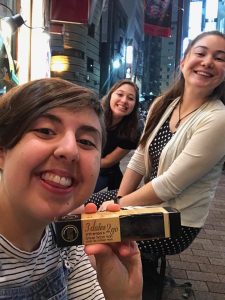
Our final orientation component of this week was Friday’s lecture from Prof. Shimizu-Guthrie, who is a part of the history department at Rice. She was one of my favorite speakers of the week, as she was fairly witty, cracking jokes about our US and Japan schools, and also acknowledged how exhausted we were, tailoring her lecture accordingly. Her expertise in the subject was shown as she gave an overview of the history of how baseball came to Japan during the early Meiji period and how over time it became a way for the US and Japan to connect and even reconcile post World War II. I think what stood out to me most from her talk was the concept that history doesn’t exist is silos of “Asian History”, “European History”, and “American History” as we are often taught in K-12 schooling, and that even in the past before our age of unprecedented globalization people from other countries still connected to a great degree and share parts of their cultures. I think this is important to consider just in what ways the pasts of our country connect us with places like Japan in ways that still impact us today.
A week in Tokyo isn’t complete without karaoke, and post Friday’s talk and a venture to the neighborhood of Jimbocho Book District with Hana and Gavin, we headed to the most affordable karaoke bar we could find Uta Hiroba, and sang our hearts out for 2 hrs. I would say this is one of the most fun nights I’ve had so far in Tokyo!
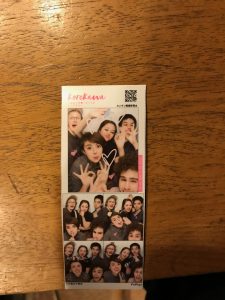
Mt. Fuji Lakes Weekend Trip with the Japanese Fellows
As much as I love the bustling activity, the convenience, and the access that a city likely Tokyo provides, it was great to get a break from it all and head to a quieter, more natural setting of the Fuji Lakes Area. What made this trip even more exciting was it was our first chance to meet our fellow 2018 Japanese Nakatani Fellows for the first time and get to connect with them even for just a short amount of time.
Bright and early Saturday morning I crawled out of bed and headed downstairs to be greeted by both the US Fellows and a small group of Japanese Fellows who’d come into Tokyo from around Japan. Let’s just say that the first couple hours were a bit awkward, especially since it was also the first meeting of the Japanese Fellow group and I think they were also interested in getting to know one another. Regardless, it was still great to see them in person. Once we got on the bus, a group of us hung out in the back section of the bus which had tables for our food and drinks and had seats facing each other which made conversation far easier. A couple hours later (with a stop at one of the largest rest stops I’ve ever seen), we arrived at our first stop along the way, Oshino Hakkai Springs. The Springs were even named a World Heritage site in 2013. This area once used to be a large lake, but due to Mt Fuji’s eruptions the lake dried up and what was left behind was several ponds filled with water from Mt. Fuji. With an engaging tour guide, we got to learn more about all the ponds in the area and their history and meaning to the people that lived there. We also got to visit a Kitaguchi Hongū Fuji Sengen Jinja which was dedicated to worshipping Fuji. I enjoyed the tour overall, although the guide made a couple comments that gave me some pause, first a comment about the many Chinese tourists we would find at the center part of the area and a quip about not being able to use the word “okama” because it meant gay. I guess on the first comment, it was almost like a déjà vu moment that brought me back four years earlier to Kagoshima when my host mother made a very similar comment about Chinese tourists at the site we were visiting which let’s say was not very nice. On the second, I guess it’s interesting for me as an LGBTQ person to hear comments like that and wonder how queer-ness exists in Japan, especially since it seems on a surface level that many of the Japanese people I meet adhere to the binaries of their gender.
- Did you know that tourism in Japan has seen massive increases in the past 10 years? In 2006, there were 7.3 million overseas visitors but by 2017 this has increased to 28.7 million overseas visitors. In March 2018 alone (the most recent month data is available) there were an estimated 2.6 million overseas visitors. Much of this increase is due to large numbers of Chinese tourists. While good for the tourism industry and overall economy of Japan, it can lead to some frustration when people in Japan feel as though some of their key historical and tourism spots are ‘overrun’ by foreign tourists. Some people in Japan even refer to tourism as ‘pollution’.
- For more on LGBTQIA+ issues in Japan see our Life in Japan resources page.
These thoughts followed me as we visited a beautiful and peaceful Buddhist temple on a hill before walking back to the starting point of our tour and boarding our bus for the next stop. At Kitaguchi Hongu Fuji Sengen Jinga, we were joined by more of the Japanese Fellows as we took a tour around the shrine. While I was already impressed by the English speaking skills of the Japanese Fellows from my short conversations with them, this tour just further impressed me as several of the Fellows were able to translate the tour guide’s words into English. I know that with my knowledge of Japanese now I would struggle immensely if someone asked me to do something like that. Thanks to them I really got to enjoy the tour and learn more about the shrine, and how it is the official starting point for hikers heading to conquer Fuji, and how people head there to be blessed for safe travels. We then headed back to through Japan’s largest Torii (which interestingly isn’t even a part of the shrine) to our restaurant, where I got put at the vegetarian table. While a little isolating, I think it was considerate to have a special meal being made for me and I really enjoyed getting to eat the delicious noodle and vegetable soup which is actually a specialty of the region.
We then drove up to the 5th station of Mt. Fuji and chilled there a bit before heading to the Gotemba Kogen Resort, where we broke away from the Japanese Fellows who went to do some orientation activities as we “relaxed”. The place we stayed could be described with one word, quirky, as it was an interesting combination of Peter Rabbit and Petit Prince characters that decorated our little huts. We probably have just as strange of places to Japanese people in the United States, since the moment the female fellows saw the place they all exclaimed that it was “kawaii”. We then ate a lot of food (that would be a theme of this trip) at the buffet, where I could finally have some longer conversations with some of the Japanese Fellows, and we got to talk about Houston and discussions of how we talk about travel in the United States (never thought about how I talk about driving distances in terms of hours before). Post buffet, I got to also talk with Mariko about English-learning in Japan, which was an example of how while Japanese focus on hard work in spending a lot of time learning English grammar and pronunciation, this hard work might not pay off as a lot of Japanese students still can’t speak the language. It reminded me a lot of my time in Kagoshima, where I was one of the first native English speakers a lot of the students there had ever interacted with and how although they’d studied hard grammar topics (even for me…I took one of their tests lol), they found it difficult to talk with me. I’m just impressed at how the Japanese Fellows are challenging themselves to practice speaking English by doing a program like the Nakatani RIES Fellowship, and encourages me to do the same moving forward with this program for Japanese. While I’m not sure yet of the dynamics of my host lab, I think by just making the effort to speak in Japanese will go a long way in terms of being the most respectful guest I can be.
I finished the night with a neat light show, a dance party where I was the only one dancing (the Japanese Fellows like my moves though! I showed them my favorite one, the shower), and a trip to the onsen where I spent time talking with Yui talking about her background as a person of Korean background in Japan. It was interesting to learn how she balances her own Korean culture from her family with the Japanese culture she’s grown up in. While she never feels like she was never discriminated against for not being Japanese, she did mention that there have been times where her Korean-ness led to her being treated differently especially since her home town has no other Korean families. I definitely think it’s interesting to think about how other cultures interact with the homogeneous Japan and learn about her story as almost a parallel to some of the struggles of first generation Americans back home.
I ended the night chatting a bit with my roommates Moe and Chihiro before heading to bed. In the morning I got us lost on the way to breakfast which meant we had to wait a bit before being able to enter the buffet, but we were still able to eat before having to jump on the bus (sweet). We headed from the resort to Numazu and enjoyed one of the only deep water aquariums in all of Japan, which was honestly cool to see and be able to recognized some of JAMSTEC’s vehicles in photographs that made that aquarium possible. Afterwards, I got put at another vegetarian table (LOL) at the sushi restaurant where I got to enjoy salad and tofu as the rest of the group ate their seafood. Still made sure to defend Houston’s diversity and excellence of medical research to the fellows when it came up at the table next to me! I want to make sure that the fellows enjoy Houston when they come and feel at home (so I’m excited for August).

We rounded out the day with a trip to the beautiful Mishima Skywalk bridge which offered us some excellent views of Mt Fuji and then some strawberry picking where we were able to eat as many fresh strawberries as we possibly could. The guys even tried doing a strawberry eating contest which was fairly entertaining to watch them struggle with. We then finally drove back to Tokyo and said goodbye to all the Japanese Fellows both along the way and finally in Tokyo. I really did enjoy all the time we got to spend with them and definitely think that this was just the start of the possible number of conversations I wanted to have with them, and I can’t wait until the mid-program meeting to reconnect. I definitely will be contacting the fellows in the Tokyo area to try and meet up since I’m always happy to have more friends!
Question of the Week
How do behaviors towards foreigners differ based on their ethnicities? I’m also curious about current views on homosexuality in Japan and want to investigate that more.
- See some of the articles posted under ‘Minorities in Japan’ on the ‘Being a Foreigner in Japan’ section of our resources page.
Intro to Science Seminar Overview
I was thankful for the lectures on basic quantum mechanics from Kono-sensei, which helped jog my memory of everything I learned in his class (Elec 261) last fall. I think for me it was interesting seeing this information again after studying the quantum mechanics of polymer semiconducting materials in my PI’s class (Dr. Eilaf Egap) in the spring, and getting to compare and contrast the solid-state physics of organic vs inorganic materials, like for example, how inorganic materials transfer charges through electrons while organic materials transfer charge through excitons. The part of the lectures I enjoyed the most was our discussion of what we need to understand the build a quantum computer, especially the discussion of how we can define our 0s and 1s in the system in a lot of different ways (and how no one can agree on what’s the best method). I’m going to be doing some quick Google research to see if there is anyone doing research into organic materials (like CNTs and polymer semiconductors) for quantum computing, we’ll see what I find!
Long days of language classes in the morning and science lectures in the afternoon are definitely EXHAUSTING but it was enjoyable getting to see some great examples of research in Japan, especially since all were about carbon nanomaterials (which I’ll be working on this summer). Our two guest lectures, Otsuji-sensei and Saito-sensei from Tohoku University, are both distinguished researchers in Japan and have even hosted Nakatani Fellows in the past. While not exactly my field of interest, I thought Otsuji-sensei’s talk on developing graphene materials for wireless communications by utilizing the THz regime was an innovative application of the material. What stood out to me most was the fact that although graphene has ultrafast conductivity, closer to that of photons than any other material, it’s hard to find ways to switch that conductivity on and off. But, in the THz regime, they found that they could induce imaginary conductivity in the material, which makes it possible for the material to be used to amplify current signals. While there’s still a lot they don’t know about how this works and how it can be manipulated efficiently at scale, it definitely is a “signal” that future applications are possible.
Saito-sensei talk was an entertaining overview of the world of carbon nanomaterials, from the history to applications. I think it was a good foundation to have for anyone starting to work on these materials. I really enjoyed Saito explaining his early research on studying the different ways in which sheets of carbon can roll into carbon nanotubes, especially considering how far the field has come since those early days. Finally, it was cool to see discussion of the space elevator since that was a familiar topic from my freshman Intro to Nanoengineering course. While I don’t know how possible it is, I think it’s amazing to consider just how strong carbon materials are that such a thing could theoretically happen.
My Research Project: Thinking about Materials
Kono-sensei gave us a set of several questions this week for thinking more in depth about our upcoming projects, which we’ll be starting in a little over a week (eek!). To make this as nicely formatted as possible, I’ve included the questions along with my responses.
- What is the material you will be using or studying in your research internship?
- This summer I will be working with two types of nanotubes, boron nitride nanotubes and carbon nanotubes. The goal will be to encase the carbon nanotubes in boron nitride nanotubes, making a “tubular” heterostructure material.
- Is it a metal or a semiconductor or another type of material?
- So, I’m not sure what the composite boron nitride-carbon nanomaterial will be in terms of its properties, although I assume that it will be semiconducting material as carbon nanotubes are semiconducting (if zig-zag) and boron nitride is a wide gap semiconductor. Still, I’m not sure if the band gap will be affected by the fact that the material is composite or is the boron nitride will act like a protective, insulating material around the nanotube. We’ll just have to wait and see.
- What is its characteristic dimensionality? Is it a 0D, 1D, 2D, or 3D system?
- The nanotubes will be a 1D material
- What properties will you be mainly studying – optical, electrical, magnetic, thermal, or mechanical properties?
- We will mainly be studying the electrical properties of the material since the end goal is to use it in devices. I feel like some mechanical properties will also be done to study the durability of this material as that has been done in past studies from Maruyama-sensei’s lab.
- What is the main experimental or theoretical method or technique you will be using? (if you already know)
- I will definitely be working with the CVD machine to grow carbon nanotubes, but I’m not sure if we will also be growing the boron nitride nanotubes via this method (which has been shown to work in past papers). I also expect to be using SEM and XPS to characterize the materials, but there might be more methods that I learn along the way. Finally, we will be doing some electrical measurements of the materials to test the possibility of using the material for solar cells (and possibly doing some manufacturing of the solar cells).
- What possible applications does this material have?
- At this point, I know we intend to use these materials in solar cells, but if the boron nitride acts like an effective protective coating these materials could be applied to other devices that use carbon nanotubes.
Week 03: Noticing Similarities, Noticing Differences
My goal in life is to live in a place where I can get anywhere without ever having to use a car, and Tokyo has met that need for the past three weeks. It’s an amazing thing to just pull out Google-sensei click on a place you want to go and just get there via train. In Houston, our public transportation exists, but is in no way as accessible or as on time as it is in Tokyo. The public transport is also safe, which is also not a thing in Houston because the people using public transport is Tokyo are people of all statuses and incomes who are just trying to get from work to home and back with fun stops in between. Public transport in the US is often made equivalent to transport for people without a car, often low income people, which I think often tarnishes its image as something nice that everyone can enjoy.
And the ride there is like a peaceful respite (usually) from the bustle of the city as everyone moves through the station like water. The ordered flow of the city is matched with the ordered flow of transport as everyone lines up to make their way onto the train, files onto the train, considerately takes up as little space as possible while making as little noise as possible, then once their station comes, files off and actually makes lines to go up the escalators (except us Nakatani Fellows who wanna go fast and often race up the stairs instead).
Often, I’m the one making the most noise in the station, on the train, etc. I’m also the one taking up the most space or somehow finding a way to not “behave” politely on the train. On Monday, I found myself getting a sign of “dame” by an older Japanese man at my legs being crossed on the subway. I was half asleep and it was probably one of the most disapproving looks I’ve ever gotten from another person, but it did get me to automatically uncross my legs and sit with them closed. Since that experience, I’ve paid a lot of attention to how people not just act but sit on the subway. People often sit with their knees together which helps them to take up less space on the subway. When standing, their legs are also together and people usually try to keep as close to the walls as possible in order to keep space open for people to get up once their stop arrives. People on public transport don’t eat, drink, talk, or listen to loud music. I think that was made really evident to me when I boarded a train to Kamakura and found myself surrounded by tourists who were doing so many things that I was totally unused to seeing in Tokyo before. I even found myself getting annoyed by their actions, which I never thought would happen to me.
Rush hour was an experience that I ended up running into more than enough times these past couple weeks. The number of people that can pack themselves onto one subway car is astounding. What’s even crazier is that no one seems to get upset, at least on the surface, as they are somewhat shoved onto the train. The same flow exists as the main purpose everyone has is to just get on the train so they can get where they need to be, simple as that. And even when people need to get off the train, people know to move out of the way and it’s like the sea of people parts to let people on and off the train. Something like this would never happen back in the states, at least not without some grumpy noises and a few expletives.
I mean, culture can often determine what one deems as “practical” from their own understanding. While I think that definitely the Japanese values like “wa” or harmony are present and well exhibited in public transport, having people line up instead of randomly jump onto a train or climb stairs or walk on a path makes much more sense logistically. Also minding others needs emphasizes the Japanese value of human relations, but also being quiet on the subway is just a nice relief in the morning when you’re tired and still waking up or relaxing after a long day. The subway can be your respite and not a big hassle.
Orientation Program in Tokyo: Week Three Overview
It was great that this week we got to have a lot of time together outside of lecture to enjoy the city of Tokyo. While I’ll be living here for the next nine weeks and will have plenty of time to explore, I loved hanging with the people in our cohort for just a bit longer. This week especially people had a lot of ideas for what they wanted to get done before they left, which made jumping on plans last minute a breeze. On Monday, after our language classes, we headed to Ueno to see the, sadly, closed Tokyo National Museum. But I guess our big fail was not too bad because we actually got to see the tail end of some kind of Bonsai tree competition. Was a nice “going with the flow” moment of enjoying a part of Japanese culture we wouldn’t have been able to see in Japan. With all our new-found time, we were also able to rent some beautiful swan boats and pedal around the lake in Ueno park. Being around all the nature rejuvenated us to continue our journey as we walked to Ameya Yokocho and learned just how hard it was to keep ourselves from being distracted by foods and goods…especially some of the members of our group. We ended the day at Kappabashi (or Cookie-dori as our friend Sam calls it…sadly you only go here to make cookies), where I got to get very excited about the opportunity to cook cool Japanese food this summer. There’s just so much equipment to explore, so I’ll have to maybe pick and choose a few gadgets and see what happens. MasterChef, Grace edition coming your way.
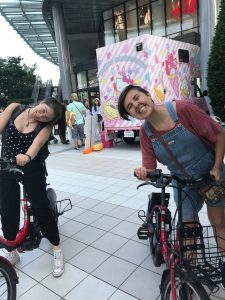
Wednesday was miraculously also a free day, and so then we were able to return to the Tokyo National Museum and enjoy their massive collection of artifacts ranging from all eras of Japan. I think for me I enjoyed learning about the Jomon era at this museum the most because while seeing all the samurai and pottery and swords and kimonos and all the stuff we know about Japan was cool and enjoyable, my understanding of the complete history of Japan is fairly limited. Thinking about Japan before it was “Japan” as we know it today is something novel to me as an American because America’s history is just so recent that we have yet to have as many risings and falls and eras as Japan. I definitely think consultations with Google-sensei about early Japan are in my near future.
Friday was a lecture heavy-day, but that didn’t mean we couldn’t have fun listening! Nishikawa-sensei’s talk was fairly philosophical, but I found myself enjoying his part about the human genetic history, especially if studying past genetics can help us find trends that can help us improve our current and future methods of care. Kento Ito was someone that I admire for his courage to travel the world, especially in an unusual way dressed in a Japanese kimono. I guess that’s really bringing the idea of cultural ambassador to new heights! I think that we were able to have a great discussion with him about Japanese culture, and I really enjoyed hearing how each of the US Fellows took away something new from the talk. Finally, it’s always a pleasure to see Ozaki-sensei, and her talk on omiyage was a nice wrap up for the official program, and a pleasurable send off to help us hit the ground running when we get to lab tomorrow (but never running in lab obviously). I learned some new phrases that I will definitely try to remember when I give my gifts (we’ll see what happens though).
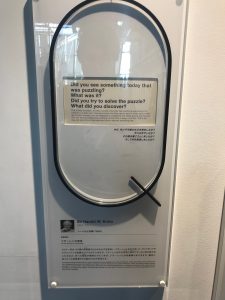
Saturday I did what I like to do and hopped on a bike trip with Ellen and Hana to Odaiba, which turned out to be extremely relaxing despite the bustling nature of the entertainment island. While we had a few issues figuring out the shared bike system, including some accidental locking of bikes without passwords, it was great to have a quick and easy way to explore and get lost without having to walk forever. We visited Miraikan and nerded out over semiconducting polymers, particle accelerators, and exhibits that acknowledged climate change multiple times over. We even got to see a robot show from front row seats! The rest of the day was spent just enjoying the water, first from a beautiful park with tons of hydrangeas, and then at the beach where we enjoyed the sunset. Recommendation: if you want to see a great Tokyo skyline without paying lots of money definitely take a hike over the Rainbow Bridge. It’s a journey but the journey is well worth it!
Intro to Science Seminars
Chris Stanton’s lecture was a nice re-emphasis of many of the concepts about semiconductor materials covered by Kono-sensei. He also brought in a lot of his own experience studying these concepts as a theorist, which I think is good to have some understanding of even as experimentalists. Theory is vital towards predicting what might happen when a new material or device is being studied. Theory can be proved/disproved by experimental studies and through that new understanding can be made.

Don Futaba’s talk was really interesting and I’m excited to potentially have the chance to visit the Tsukuba facility as he works closely with a lot of the faculty in the Maruyama-Lab. He focuses largely on synthesizing materials, and has developed an entirely new CVD process that allows for high purity and high yield CNT synthesis. While for me I like to use the materials that are being made, it is absolutely necessary to find ways to more efficiently make the material you need in order to lower the cost and make the device commercially viable. I also think Futaba-sensei’s story is so interesting since he just “happened” upon being in Japan and now doesn’t want to leave even if he still struggles with being an American in Japan. He had some good words of wisdom for us as we prepare to work in Japanese labs that will be some notes I’ll be referring religiously throughout the internship.
Finally, Ishioka-sensei’s talk about her experience being a woman in research in Japan was super interesting and even provoked a conversation afterwards among the female US Nakatani Fellows about our own experiences as women in STEM and the things that either supported or discouraged our involvement in STEM fields. I think it’s interesting that while Japan’s women in science numbers are overall behind the US, a lot of engineering/natural science fields like physics have very similar numbers in Japan as to the US. So, while the US is ahead in some ways, there’s still a lot that the US and Japan need to do to get equity in the field.
It’s crazy to think that we’ve already been in Japan for three weeks and that I’m going to be starting my research project this week. I’m still thinking a lot about what Kono-sensei brought up last week about Moire effects. Moire effects occur when there is lattice mismatch between 2D materials, and there are known Moire effects when graphene is overlayed on boron nitride. The Moire effect introduces new periodic potentials and the BN substrate also helps to reduce scattering and lessen charge fluctuations. This topic in physics is still largely unknown to me so I am currently reading a lot of papers to try and understand it better. My question is whether the Moire effects shown in 2D materials with also be shown when the layers are rolled up.
I am really curious to see the process of developing materials from start (idea) to finish (characterizing and getting ready to apply to a device). I’m wondering what are the steps along the way and whether it’s a linear process or rather a more circular, iterative process. It’ll be exciting to see.
Finally, I can’t wait to learn a ton of new experimental techniques and (hopefully) get to the point where the material can be made into some kind of device. I’m interested in going into making devices in the future, but I also think knowing how to make new materials is important because without new materials we can never push the limits of our current device capabilities.
I’m all moved into my housing now and spent Sunday in Kamakura trying to enjoy nature and find peace before starting the internship tomorrow. While I’m nervous, I’m excited to see what I discover!
Question of the Week
What postures are “casual” and “professional” in Japanese culture? What other body language is “preferred”?
- See some of the articles posted about Body Language under the ‘Japan: Indirect/Nonverbal Communication’ section on our Intercultural Communication and Skills page.
Week 04: First Week at Research Lab
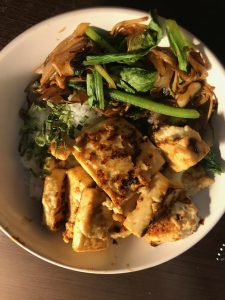
Being in Tokyo for the nine week internship made the check-in process a breeze. My apartment is only a short ride away from Shinjuku in the Asagaya neighborhood of Suginami, which is a lot more low-key/not touristy area of Tokyo. I really enjoy living in an area where people actually live. My first night I strolled down the large shopping arcade and saw people shopping for groceries, bartering for items as shops closed, and eating and chatting with friends. I also headed to the grocery store which is just a short walk from my apartment and actually also has a dollar store on the first floor (very convenient). People say that Tokyo is expensive, but I was able to get almost a week’s worth of food and some essential pantry items for about forty dollars. I made good use of all those ingredients this past week, including all of the Japanese seasoning I’ve collected. Let’s just say soy sauce and miso have become my best friends.
On Monday, I headed to the train which is about a ten minute walk from my apartment and took a thirty minute subway to the University of Tokyo. The long commute has to be the one downside of my apartment, but I’m finding ways to entertain myself (at the moment I bought a couple books and a Gameboy Color for the ride). That morning, I had the chance to meet with Maruyama-sensei and discuss more about the project. It was an invigorating meeting overall because of his infectious excitement about these new materials. They are working hard to publish something soon because they want to be the first group to showcase the properties of the boron nitride-carbon nanotube heterostructure. There are a ton of people working on this project, working on everything from the photoluminescent properties to developing coating methods beyond boron nitride. Basically, I’m here at the right time and I can’t wait to dive deeper into research!
After the meeting, we took some photos and made some introductions to people in the lab. I then got invited to have lunch with Seungju and Akari, and got to see the beautiful campus cafeteria (even though I’ve brought lunch every day after because there weren’t that many vegetarian options). Akari and I have connected over the past week because she is the only female B4 student. She was excited to meet me and get to know me because she doesn’t know many other female researchers around her age. We’re both not the best at each other’s languages, but we’re making it work through a combination of Google translate, photographs, and charades.
The rest of my first day was pretty uneventful, mostly just reading papers and making plans for what equipment I needed to learn in order to make my project happen. I had to leave lab around 6pm to get back home in time to receive my bags from the Ta-Q-Bin which is truly With my bags I was finally able to unpack and make the apartment feel more like a home!
This first week at lab was devoted to learning how to use a lot of the equipment I’d need for the summer. Following my handy plan I made the first day (woo organization), I checked off more than one box on my list (a lot more actually). I learned how to use the CVD to make both carbon nanotubes and coat those tubes with boron nitride, vacuum deposition and sputtering for making substrates for carbon nanotube synthesis, substrate preparation for horizontally aligned carbon nanotubes…which is a process, and SEM. I also got to know more about my mentor Zheng-san even though our interactions are still a little awkward. While I am in training now, once I begin my project I expect to be fairly independent since I’m technically not shadowing anyone’s work. Therefore, I can really take my project in a lot of different directions which is both exhilarating and terrifying because I want to contribute something at the end of the summer. Even if I’m acting independently, the people in the Maruyama lab are generally friendly and helpful. So far, I’ve just had to send an email to someone and they’ve been willing to take time out of their day to train me, so that’s really nice!

My evenings this week were mostly spent staying too late at lab reading papers and then rushing home to cook dinner because I was really hungry. But Thursday I visited Nakano and enjoyed getting lost in Nakano Broadway and trying to find the right shop before just giving up and window shopping. During the weekend, I spent a lot of time by myself wandering the neighborhoods of Tokyo, which was a fun people-watching activity. While I love traveling with people, it’s great to explore solo because I am able to take in everything at my own pace. It’s also nice to be able to blend into the crowd and just “go with the flow”, which is something not really possible when you’re with other people. I wandered around Koenji, which has to be my new favorite haunt because of all the cool secondhand clothing shops that were actually affordable, and Harujuku, which I feel is more touristy than hipster. Saturday night, I met up with someone who Savannah Cofer introduced to me who is an intern at Amazon for the summer. We hung out in the Ginza area before checking out Shinjuku and it was great to have a new friendly face in the area! On Sunday, I headed to a small vegan festival where vegan brands from all over Tokyo were showcasing their products. Who said Japan wasn’t vegan friendly? I then scoured Akihabara for retro games before actually finding the most affordable games in Shinjuku (whoops). Learning new things even on the weekend.
Reflections on the Orientation Program in Tokyo
The orientation program was a nice buffer period that gave us the time to adjust, and not just from jetlag. Through our language classes and cultural seminars and activities, we could start looking below the tip of the iceberg of Japan that most tourists see. It was also nice to have all the Fellows together for a couple weeks before we all went to our host labs, since they were automatic friends who were willing to go on adventures. From the orientation, I think the thing that I took away that has been the most impactful for me was just the increased awareness of Japan’s high attention to detail. This attention to detail is displayed in everything from the design of and care for clothes to safety procedures. And I guess for myself, there’s a lot I can do to be more cognizant of the details, and hopefully being in Japan can help with that. Beyond what we learned in orientation, I’m interested in finding things that contradict my current perception of Japan/expectations of Japan and trying to understand how/why those contradictions exist. We’ll see what I discover!
Research Project Introduction
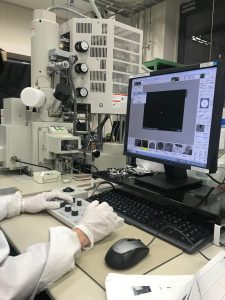
My concrete project is still not fully determined, but I’m starting with making horizontally aligned carbon nanotubes and coating them with boron nitride and then testing the characteristics and properties to see if they would be a good material for Si or Perovskite solar cells. After reading some papers, I might also try a molybdenum disulfide coating, as a very famous Science paper from 2013 showed improved photon absorption and electron hole-creation in graphene-transition metal dichalgonide-graphene structures, which is good for solar cells. Once I become more confident in my coating abilities with boron nitride and if I have the additional time, I might explore MoS2 coatings and see if I stumble across a material with comparable properties or maybe even new better/new ones.
My mentors for my project are Zheng-san, a first-year graduate student. Inoue-sensei, and Xiang-sensei, but already in my first week I’ve gotten additional mentorship from some Masters students who showed me how to do vacuum deposition and SEM. There’s also another undergraduate, Delvashish, working on the boron nitride coating project who’s been here a couple of weeks and he’s also helped me become adjusted to the equipment.
Beyond what I’ve already learned in my first week, I still need to learn Raman spectroscopy and other characterizing methods like XPS for checking that my material is what I think it is and that the coating is happening properly (I’ve heard there have been some issues with coating the horizontally aligned nanotubes…so we’ll see). I want to make it to the stage where I can make a basic solar cell, so I’ll need to learn solar cell synthesis (I’ve started learning some techniques in making the horizontal nanotube substrates), and then some tests like IV measurements. If I don’t make it to that stage, I might just focus on doing electrical measurements like UV-vis and sheet resistance in order to learn more about the conductivity of the films and potential for solar cell applications.
My schedule at the moment is still a little rough, but I’m planning to spend the first two weeks in training and perfecting the techniques I’ll need to be successful. For weeks three and four, I will try to create a few materials of my own and do some initial tests of their properties. Weeks five and six will include expanding my set of materials and potentially trying some MoS2 coatings and then finally weeks seven and eight will be focused on learning how to manufacture some basic solar cells and do some tests. I’m going to leave week nine as a buffer week where I can either have the time to synthesize all the data I’ve collected or finish parts of the project that still haven’t been finished. I’m trying my best to avoid the mad dash to get data at the end of the summer, but we’ll see if it goes per plan.
Question of the Week
What is the prevalence of homelessness in Tokyo/Japan at large? I ask because I had a person on Saturday offer to help us find our way, then followed us and eventually asked us for money for food. It was a strange experience it seemed as if he was trying to be helpful. It also felt like he targeted us because we were Americans. That night I also saw several people sleeping under a bridge. But during the day, nowhere in Tokyo have I seen people begging or visibly homeless, so I wonder whether there are just a lot fewer homeless people in Japan or if Japan does a better job at hiding homelessness. Along those lines, what are the most prevalent social issues in Japan and how does Japan go about addressing those issues?
- Homelessness is a much smaller issue in Japan than in the US, but it’s still an issue in cities (mainly Tokyo and Osaka). Since homeless people don’t want to be seen, and society doesn’t want to see them, it seems one of two things happen. Homeless people are either nomadic during the day, only returning to their usual spot to sleep at night, or they congregate in certain places where the police won’t harass them too much. These places are usually public parks near major stations (like Ueno, where you rode the swan boats, or just west of the Tokyo metropolitan building in Shinjuku). Those who are homeless but not completely destitute will stay in internet cafes, which are inexpensive but offer showers, etc.
- As far as the most prevalent social issue in Japan, the answer depends on who you ask. This would actually be a great question to ask some of the friends you are making in your research lab and/or the other Japanese Fellows during the Mid-Program Meeting.
- Homeless in Tokyo: Fallen Through Society’s Cracks and Frozen Out (Japan Times)
- Homeless in Japan: Invisible and Tolerated (Japan Talk)
Week 05: Cultural Analysis – Life in Japan
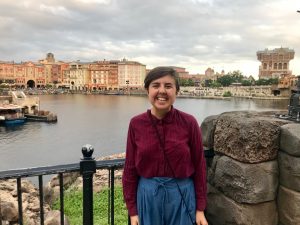
This past Saturday I had the chance to meet with a local Tokyo woman and her son who were friends of a friend from Rice. We had a wonderful day exploring the city of Tokyo, and basically city-hopped from a nabe restaurant in Shinjuku to the in Bunkyou to the Sky Tree to a sumo museum in Sumida. She was extremely generous, buying my lunch and the tickets to the different attractions we visited even though we had just barely met. She also gave me the chance to speak in Japanese with her, which was good practice for carrying a simple, casual conversation. We talked about everything from our pets to our families which were easy and were perfect conversations to include photographs which helps when my vocabulary fails me.
I knew from our back and forth emails that she and her husband were only able to meet with me on weekends because that’s when they are most free. Because we had been talking about family for a while, and I was curious to know more about her life, I asked her the question “Doko ni hatarakimasu ka? Nani o shimasu ka?”. I was met by a look of confusion, which made me uncomfortable as I was curious what I said wrong. As I wracked my brain and tried to think then her eyes glowed with realization as she replied to me that she is a housewife. She said that she was responsible for taking care of the home and raising her children and that her husband is the one who works. After this, she asked me about my parents and what they did, but asked so in a way that was like “do both of your parents work?”. While surprised to hear it framed in that way, I went on to answer her question, explaining that not only do they both work but that my mom owns her own company. This she started to nod quickly at and look intrigued by, as if the concept of my mother owning a company was novel. She made a couple comments in Japanese about the idea of my mother working and having a business and then the conversation just…ended.
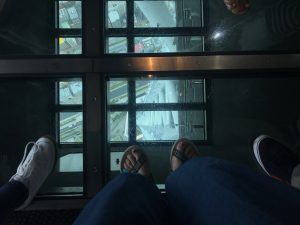
I guess after that conversation I felt a sense of embarrassment that I had just assumed that she worked. I just assumed so because of how our conversation over email went and my own preconception that families should have two working parents and that women should still be able to work even if kids are in the picture. And for her being surprised to hear that my mother owned a business, I assume that it’s likely that not many women she knows follow that path. So, her reaction also shouldn’t have made me as uncomfortable as I was. The misunderstanding is largely just from the fact that both of us don’t know enough about the working lives of women in our respective countries. And while it was definitely a low point in an overall great day, I think it was a good chance for me to be more cognizant of my assumptions, especially when living in a country where what I am likely to assume is often wrong or incomplete. I also think I need to be more conscious of how I react to things people say or do that I perceive as negative things, such as a woman being comfortable to say she’s a housewife. While I might disagree with that lifestyle, I need to better understand its origins before I can truly judge it.
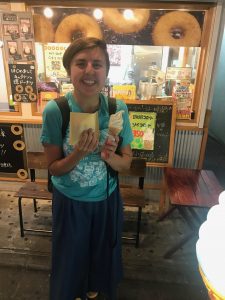
Beyond this recent experience, I’ve been trying to keep my life outside of lab on weekdays from becoming too routine. I’ve mostly been doing this by trying to do one thing outside of lab that isn’t just, go home, make dinner, go to bed. Whether this is heading to the bookstore or a new grocery (found a really cool organic grocery earlier this week in Shinjuku!) or meeting up with people at a nighttime event in Tokyo. For example, on Thursday I visited the Shimokitazawa Night Market, which was a cute market in a small park located under the train tracks. Very hipster indeed. And on Friday I went out to dinner with a few of my lab mates using the Meetup service, which brings together groups of people with similar interests. This meetup specifically was for people looking to make more friends in Tokyo and speak English/Japanese with them. It was a great adventure overall as I was able to get to know my labmates better and befriend a nice Tokyo woman. I actually used Meetup again Saturday night to find a vegan buffet and meetup which was neat because there were actually a ton of people there! Finally, on Sunday I spent the day in Tokyo DisneySea, which has to be one of the most beautiful, well-run and well-designed Disney parks I’ve ever been to. Overall a very full and rewarding week.
Research Project Update
This week my project finally started to become more concrete after a discussion with one of my mentors Xiang-sensei. I’ll still be working with the horizontally aligned (HA) nanotubes, but instead of just coating the tubes and trying to figure out their properties, I’ll be using the TEM to study the BN coating method which will then inform the best way they could be used. If the coating fully wraps around the tube, then the structure is similar to a co-axial wire with the BN forming a protective coating of the carbon nanotube. But, if the coating doesn’t fully wrap around the tube, which is likely because the HA nanotubes have strong interactions with their substrates, then applying to a device will require further testing, starting with a top gate transistor as an early prototype. If I can complete this work and have time left, I will start looking at applying MoS2 coating on the BN coating of the HA nanotube and try and perfect this method, since this material will have a lot of interesting properties to probe for devices.
At this point in time, they have done TEM studies of the coating method for vertically aligned tubes and random nanotube films, but have not yet done studies on the horizontal tubes. This is because it is difficult to create samples of HA nanotubes for the TEM because one must make thin vertical cross sections without damaging the sample. Xiang-sensei thinks that it will be possible and will work with me on this part. Once I can finish making the coated HA nanotube sample and confirming coating occurred through SEM, AFM, and Raman, we will spend a week doing TEM on a few of our samples
So, I am currently in the process of making the substrate for the HA nanotubes, which is an endeavor. It is a six-step process that takes several days to complete (3 days if you’re moving quickly, 4 days usually). I’ve learned and completed the first three steps of the process, one of which had me going into the clean room to use the photolithography machine. I’ve never felt like more of a scientist I used to love watching in movies than when I had all the necessary gear on for safe entry into the lab. It was very stressful but a rewarding experience since we checked and the process worked! Next step will be adding the catalyst and then doing some CVD.
Training-wise, I assisted Delvashish, the other visiting undergraduate in my lab, with his zeolite project by coating one of his samples by myself. It was a little nerve wracking but the results came back that the coating worked so that means I didn’t mess it up. I also saw the CVD be used for the 3rd time, so hopefully the next time I see it used it’ll be me using it! Finally, I learned some basic techniques for Raman spectroscopy and practiced on a few samples and feel confident that I could identify all the necessary peaks.
Also, not research-specific, but life in the lab has been good overall. I met a lot of new people on Tuesday because we had my lab party and realized just how big the lab was. I also befriended one of the assistant professors, Jeon-sensei. He has a very untraditional life story, as he was born in Korea, raised in the UK, and now works in Japan (and he can speak all of the languages of the countries he lived in almost fluently). His expertise is in solar cells and his lab team is very active and has been generating a lot of innovative papers recently. Therefore, I think beyond friendship (which is much appreciated), his expertise in solar cells will be helpful later in my project if when designing devices to apply to coated HA nanotubes I want to apply them to a photovoltaic.
Hopefully by next week I’ll have finished the coated samples and be moving to TEM studies. It’s nice to have a concrete way to contribute and get to use a lot of new equipment. As always, excited to see what I find!
Question of the Week
As more Japanese women enter the workforce, are traditional gender roles in the family being altered to fit new lifestyles? Or, does childcare/housework still fall on the wife in heterosexual couples?
- In Japan, there is a growing tendency for women to stay longer in the work force either because they want to delay having children so they can establish a career first or they choose not to have children. If they do have children, I think the gender roles are typically quite traditional and it is most common for the woman to stay at home. Not having children would probably be seen as the alternative lifestyle.
- In Japan, Career Women Challenge Culture Norms (PBS Newshour)
Can a Japanese middle-class family still be financially comfortable with only one parent working?
- Japanese children often have a lot on their plate so one parent takes care of housework/bento/lessons/cram school while the other tries to afford all that. Perhaps the biggest difference (and this is just a guess) is that the social safety net in Japan is much better than in the US. Many things are on a sliding scale so that most people can afford them. Also, most people at a given point in their lives make a similar amount of money compared with their peers, so expenses tend to scale accordingly.
- The cost and availability of childcare, particularly subsidized childcare, is one of the key reasons it becomes very difficult in Japan for women to remain in the workforce. They simply cannot find all-day childcare options or they are too expensive. Indeed, this is a huge challenge in the U.S. too where, in Texas and most other states, the annual cost of licensed childcare exceeds college tuition. So, whether to remain in the workforce becomes a cost-benefit analysis and often the spouse/partner who makes less money will choose to stay at home and – even in the U.S. – this is still typically the mother.
- For more on this topic/question, see the section on Work Ethic and Work Culture in Japan and Work Ethic and Work Culture in the U.S. on our Career Resources for S&E Students page.
Week 06: Cultural Analysis – In the Lab
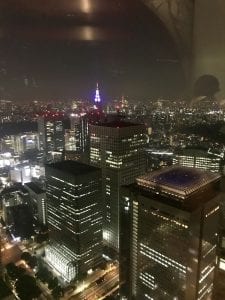
So, reflecting back on my first day in lab, I remember meeting with Maruyama-sensei and being incredibly excited about the project. They found a simple way to create coaxial nanotubes? That’s so cool! I met several of the assistant professors, met a few graduate students, and overall was feeling ready to get started. I went and got lunch and returned feeling completely energized for exciting research. And so I sat…and I waited. I waited for someone to come show me what I needed to do, talk more about my project, anything. But no one came. Thankfully that meant I could leave early to pick up my luggage from Ta-Q-Bin, but it still wasn’t exactly what I was expecting.
The next day I came in and again, sat at my desk for most of the morning reading papers… I was wondering what I wasn’t getting. Was there something I missed during the meeting with Maruyama-sensei? Is there a person I just happened to not meet who was supposed to show me how to do everything? What did I do wrong? One of the assistant professors tried to be helpful and helped point me to a graduate student who taught me a technique I’d later use to make my substrates, but it still wasn’t the guidance I sought. I was overwhelmed and tried to make the most of the situation by learning as many techniques as possible and reading as many papers as possible, but it didn’t feel like enough. I was worried that the steps I’d define would not be good enough, not get the right data, and lead to a bad project in the end.
Turns out, I really had done nothing wrong per se, just that I was unfamiliar with how the Maruyama lab (and apparently according to Xiang-sensei, a lot of Japanese labs) conduct themselves. While guidance exists, and will be given gladly if asked, people are often given an idea to work on and that’s it. I am definitely not familiar with that way of conducting things, so it was a bit unsettling and made me feel really lost at first. While I like to work independently and can define my path through given steps, I’m not familiar with defining the steps themselves.
Speaking with Xiang-sensei the second week, it turned out there was a project in mind, and so my path became a bit less confusing and more defined. While I still am at the liberty to be creative and try new things and ideas I might have, it’s nice to know that I’m working towards at least one thing that’s important to the boron-nitride coating investigation. Beyond that, whatever else I try might or might not work out, but it’ll at least stretch my abilities as a researcher who can both accomplish tasks set out before her as well as define a path.
While I was lost the first couple of weeks, I think it challenged me to read a lot of literature and think of all the wild ideas I could try. I still think I need a bit more work and time before I become entirely confident coming up with my own ideas and trying them, but maybe this summer I’ll get the chance to practice. I guess this experience also challenged me to be a little less hesitant to ask for help when I don’t know something or what to do.
Reflecting on Time in Japan So Far
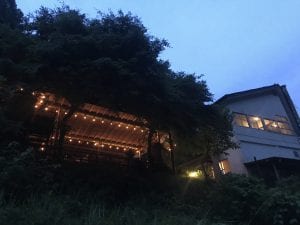
If I had to think about what’s been my biggest personal accomplishment as well as challenge so far, I would say they all have to center around living alone for the first time in my life. Never have I had such control over my life, my space, my food, my waking hours, etc. And so far, I feel proud that I have most things under control. I cook all my meals at home every day. I even have the chance to try new recipes and all have turned out delicious so far. I can shop in the grocery and get the perfect amount of food I need for the week. I go exploring around the city of Tokyo a couple nights a week after work, navigating the subway with ease. I’ve made friends in the Tokyo area that I also meet up with during the week after work and on weekends. I don’t work (yet) long hours at lab but still manage to get everything done. I’ve even gotten to pick up reading again since I have time to during my commutes and in evenings when not working on other projects.
And while all of this feels great, I still can’t help that a lot of the time I feel very alone. I’m not averse to extended solitude, but after spending three weeks with twelve people living by yourself is a major change. I have people that I’m friendly with in lab, but the language barrier makes it so that I can’t share a lot of my thoughts with them beyond simple conversation. I meet my friends in Tokyo, but several hours mostly doing fun sightseeing things around the city isn’t the same as having someone over at your place for an evening to just talk and cook and hangout. I guess being alone gives me more time to do things for work, to explore hobbies, etc., but there are times I wish there was one other person around who I could talk to everyday about my experiences. Maybe this is a challenge for me this next week and post-mid-program meeting to figure out.
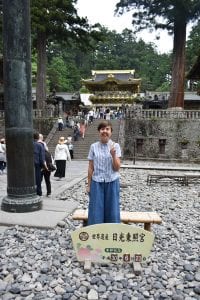
Research-wise, my project timeline has shifted a bit as I’ve moved to focus largely on the TEM study and device development project instead of my initial plan, but I still feel like I’m on my way working towards the goal of having meaningful results by summer’s end. Week 4 is now focused on getting the sample made and starting to do cross-sections and TEM. Week 5 is short due to mid-program meeting but will likely be focused on finishing the TEM and trying to work on device designs and some pre-planning for the MoS2 coating. The final three weeks with largely depend on how quickly we can finish TEM but will focus on device development and the MoS2 coating. I think I’ll have something, but what that is still a little blurry.
Research Project Update
So, the beginning of this week was a bit rough to say the least. The substrates that I’d begun making last week were sadly ruined because of an error (ok, two errors) when using the vacuum evaporator. The first time I used the machine I didn’t make sure that the contacts were secure between the evaporator boat and the electrodes, so I had to schedule a later time to use the machine again. Then, the second time, the shield that protects the sample from evaporation was incorrectly placed and so the sample was being continuously deposited on…and was ruined. Along with the fact that I was informed that the only sample I had left had had too much exposure during photolithography, I had zero out of two samples remaining.
Thankfully, we were able to bounce back quickly because we reserved the cleanroom for the next day and then do vacuum deposition the very next day. So all was well, even if things got a bit delayed. I’ve become a lot more conscious when doing experiments, making sure that everything is completely perfect and in its right place before starting. It takes a bit more time in the individual experiment, but it saves time in the long run.
I started growing the horizontally aligned carbon nanotubes on Thursday once I had the new samples and didn’t exactly get the density needed for the TEM study. It still was great practice getting to use the machine with only minor supervision. On Friday, I did another round of growth and got near perfect density of nanotubes, which was a great confidence booster as this was done completely solo!
Next week I’ll start doing boron nitride coating and confirmation of the coating. This should be done by Tuesday, and then hopefully I can get some initial TEM data by the end of the week before the Mid-Program meeting. I feel like it’s cutting it a bit close, but we’ll see how the week turns out.
Outside of lab work, I’ve been reading papers and practicing Japanese. Basically, when I find myself tired by one I switch to the other. I feel like the more papers I read, the more I know and find myself capable of explaining, even if it’s not entirely relevant to my project. I’ve collected about 60 papers so far, we’ll see how many I collect and summarize by the end of the summer.
Questions of the Week
Beyond Nikko, what are the must visit National Parks in Japan? I’ve gotten a taste of Japan’s natural landscapes and I’m interested to figure out what other beautiful places are out there. I’m also curious what laws exist to protect natural places in Japan, is it like how they exist in the United States?
- The top-three scenic spots in Japan (in no particular order) are:
- Matsushima (near Sendai),
- Amanohashidate (north of Kyoto)
- Istukushima Shrine, Miyajima (near Hiroshima)
- Of these three, I would recommend Miyajima (at high tide). This also gives you a chance to see the Atomic Dome and Peace Memorial/Museum in Hiroshima. I think this is the only one that’s also in a national park.
- Of the national parks, I would recommend Fuji-Hakone-Izu (near Tokyo), Ise-Shima and the Ise Shrine (south of Nagoya), Seto Naikai (near Hiroshima, between Honshu and Shikoku), and Yakushima (south of Kyushu; probably too far). I think the laws to protect natural places are pretty similar to those in the US. Natural resources are pretty scarce in Japan though, so issues related to accessing what lies underground (e.g. mineral rights) are nearly as contentious as they are in the US.
Mostly due to some light reading I’ve engaged with on morning subway rides, I’ve thought a lot about the “the American dream” and what it means to me. What is the “Japan dream”? How is it similar/different?
- The Japanese dream is much more about having a comfortable life based around a successful yet stable career than getting rich and changing the world. I think the American focus on upward mobility is not so important to the Japanese because the middle class is large and socioeconomic classes are not as spread out.
- The American Dream – Japanese Style
Week 07-08: Overview of Mid-Program Meeting & Research Host Lab Visit
Before the Mid-Program meeting, I was honestly worried about my progress since My project had shifted around a few times and people’s schedules didn’t align with mine. Therefore, I really was only able to get half of the things done that I’d wanted to before I headed to Kyoto. While I knew results were not expected, I still was a bit disappointed in myself for not having more to show for four weeks of research.
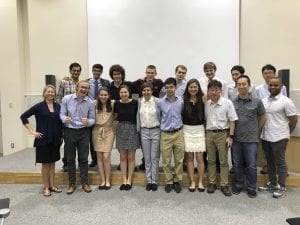
I know this is weird to say, but I was pleasantly surprised to find that everyone was in the almost exact same place as me. We all had initial results or for some just experimental set-ups. And yet, we all were able to give interesting, in-depth, and engaging presentations, mostly because everyone knew about what they were working on. And I realized that while results are nice to have, this understanding of how things work, the reasons behind different methods, and what results you expect and why is ultimately more important. This is the difference between doing research and being a researcher. When you just do research, you don’t care about understanding what you’re doing, just getting the data that your supervisor tells you is good. But when you are a researcher, the process – from idea, to knowledge building, to implementation and analysis – is what drives
And I realized that I was actually more successful than I originally thought. When research was slow, I planned potential experiments and read papers. I made use of my downtime, and it helped me to be more confident when I presented and answered questions. I’m proud of what I produced in the end. I think I need to work on how I respond to questions, but other than that, it was a great experience.
Research-wise, before the mid-program meeting I worked on characterizing the as-grown and coated BN-HACNTs samples using AFM and SEM (shown in my presentation) and growing a denser sample of HACNTs (I need a dense sample for TEM). When I returned to lab on Thursday bright and early at 10am, I worked most of Thursday creating the horizontal cross-sections of the substrate for imaging the nanotubes. We were able to create very thin slices of nanotubes, but we’re not sure yet if the nanotubes retained their structure after mechanical slicing and polishing. On Monday I’ll be imaging the nanotubes, and let’s hope I’m lucky on the first try. Stay tuned.
Reflections on Mid-Program Meeting
I never realized how hard it would be to trade trains for buses. In Tokyo, I’ve become a pro at navigating the train system. I love how I can get anywhere I want in the Tokyo area in relatively short amounts of time (usually under an hour). So, when I got off the Shinkansen in Kyoto, I grabbed a map and saw that there were…2 subway lines. Ok, this is new. I also realized that neither intersected with the station I was trying to get to, which was on a different train line that didn’t even come to Kyoto Station. No train from Kyoto Station even intersected with that line. I was quite shaken by this realization. It was late at night and I had absolutely no idea how to get where I needed to go and no wireless connection. I exited the station and saw buses and thought “I can make this work”. Thankfully, there was a bus that went exactly where I needed to go and I was able to make it to Gavin’s apartment. It was a reunion well earned!
While I’ve really enjoyed my time in Tokyo making new friends within my lab and with people I meet on my travels/networks, I’ve missed the other U.S. Fellows a lot. We spent so much time together in the beginning bonding over struggling to adjust to Japan and exploring Tokyo that we became super close. Good thing our close friendships could pick up right where they left off! They all made the perfect companions for taking on the city of Kyoto
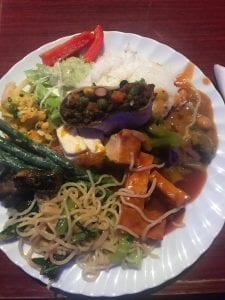
Saturday morning, I headed to Arayashima bright and early. While hiking up to the Monkey Park I heard a familiar voice call my name and looking up it turned out to be none other than Hana. Great minds think alike I guess. Because we had similar plans for the day, we decided to team up and take on Kyoto together. Together, we strolled through the bamboo forest, dined on shaved ice (because Kansai is hot, wow), and ate our way through the Nishiki Market. We ended the day with second dessert at a vegan café which had not only all dairy-free desserts, but gluten free ones as well. Grace and Hana -1, Dietary Restrictions – 0.
We made it to the Kyoto Traveler’s Inn just in time to get treated to a buffet, where we reunited with the Japanese Fellows. It was great to see them again, especially since they were so excited to talk about Rice and Houston. I realized hanging out with them again how cool it was that this networking opportunity was made possible. That we could come from entirely different countries and backgrounds and yet connect over loving food, talking about research, etc. I also think I’m so lucky that these relationships don’t really end once I go back to Rice because they’ll be joining me there soon after! I can’t wait to help them get used to Houston as some of them have helped me get used to Japan. Sahil and I are already planning potential activities.
We rounded the night out with Karaoke, which almost every Fellow went to. It was an exhausting whirlwind of English and Japanese songs, but was probably one of the most fun nights I’ve had in Japan so far.
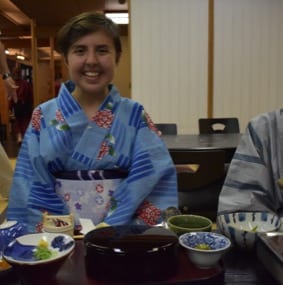
Sunday, we got to experience some cultural activities donned in beautiful yukatas. While I love the designs of the women’s yukatas, there were definitely points throughout the day that I would have killed to wear a men’s yukata. The women’s yukata is beautiful but a bit constricting and as someone who loves t-shirts and baggy shorts it took some getting used to. But, still, there’s nothing more aesthetic than having a tea ceremony dressed accordingly. I had so much fun not just getting to enjoy the fruits of the ceremony (otherwise known as matcha and wagashi) but get to make some tea for the Japanese Gellows! Now I know the technique for making nicely blended matcha, and it’s not too match-a work. After, we were treated to what I think was one of the best meals of my life, a multi-course tofu-focused dinner. Before coming to Japan, I never realized how many ways soy/tofu could be used. Now, I don’t think I can go back to just having “extra firm” in the grocery store. I finished the night with a stroll through the Gion district at night, which was partly to explore the area and partly to move a bit after eating so much good food.
After our research presentations Monday and tour of the fascinating iCEMs laboratories, a group of us headed to Fushimi Inari and enjoyed not just inari sushi, but also the inari shrine! I was still donned in my business gear, which was a big mistake as I was sweating buckets in the heat. Eventually I just stopped caring about what I looked like or how gross my clothes were, because I knew I could wash up eventually. After conquering the shrine, Hana, Kaitlin, and I headed to Choice, a vegan + gluten free restaurant, and I had some of the best pancakes of my life. So that sets the record at Grace and Hana – 2, Dietary Restrictions – still 0.
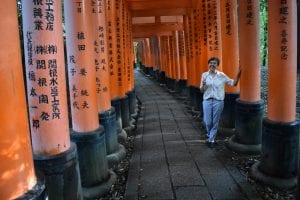
While initially a little skeptical of the cultural activities planned for Tuesday because it didn’t include some of the popular Kyoto shrines I knew of by name recognition, I greatly enjoyed everything we did that day. They were places I never would have gone to on my own, but yet couldn’t have imagined not getting to enjoy. They’re a part of history that tourists to Kyoto sadly miss in search of the more visually pleasing shrines like Kinaku-ji and Fushimi-Inari. Our tour finished at the Manga Museum, and after a brief cool down in AC and some browsing, I went to check out the stunning Imperial Palace and then hiked to the top of Kiyomizudera. Kyoto may be touristy, but it has some incredibly beautiful views that can be enjoyed without being too overrun and the Kiyomizudera temple (with a paid entrance fee) has to be one of those places.
The visit to Sysmex, was a beautiful end to a great program, and I liked getting to learn about the company that basically funds my stay in Japan. I really loved their overall focus on innovation, and pushing the limit of what’s possible. They’re working on such interesting device challenges, and while I don’t know if my research will ever intersect with their work, it’s still fascinating stuff.
Back in Tokyo, I made sure to stay busy, enjoying a delicious Vegan Buffet Meetup with friends on Thursday and getting festive at the University of Tokyo summer festival for international students on Friday. The summer festival was a welcome surprise to my Friday, and I got to hang out with some of my lab mates while doing origami, calligraphy, traditional Japanese games and a tea ceremony. I also made some new friends with some Japanese students and spoke entirely in Japanese with them. We connected afterwards and hopefully will get to meet up again so I can practice some more!
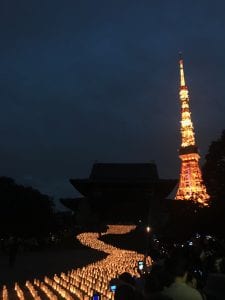
Saturday, I festival hopped from Shimokitazawa’s Music Festival to the Tanabata event at Kappabashi-hondori, to finally the lanterns Tanabata event at Zojo-ji. Finally, Sunday I activated my Rail Pass and used it to head to Kanazawa, a beautiful city on Japan’s west coast. If you’re interested in Japanese history, modern art, and/or delicious food, you must go to Kanazawa because it has it all! It wasn’t really touristy at all, which is something I prefer when I travel places. Everyone I met there was super friendly and super curious about me because they don’t get many visits from Americans. It’s off the beaten path for sure, but sometimes that path is the most worthwhile.
Question of the Week
Do Japanese people consider festivals like Tanabata a “religious” activity? If no, what are they considered to be? A lot of them seemed to be held at shrines/temples, which makes me assume they have some tie to religion.
- Tanabata is a tradition, but not religious (although that tradition is rooted in religion). Even if the festival has not lost its religious connection, people don’t necessarily participate because of their religion.
- Think too of Memorial Day in the U.S., which is a day to honor the memory of veteran’s, or Labor Day in the U.S., which is a day to honor the American worker. This is the history of the founding of that holiday in the U.S. but, today, most American’s equate these holidays most with a long weekend to mark the start and end of summer, BBQs, and beach/lake outings with friends and family. The holiday is less about its original meaning and more about the traditions that make up American life.
Week 09: Research in Japan vs. Research in the U.S.
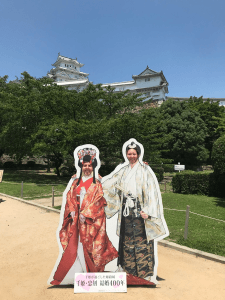
“Sorry for having you come so early for our meeting” Maruyama-sensei said. Early…it’s 10am…? This phenomenon of our lab has been lovingly called “Japan-time”. I can get into lab at 11am and still be one of the first people in the office, which is something entirely unfamiliar to me. In my past full-time lab position, the “9-5” work schedule was the gold standard. While there were cases when it would be more like 9-6 or 9-7 depending on what needed to get done that day, that early start was important for showing one’s commitment to the group.
From what I’ve learned, since it’s pretty expensive to live near the University of Tokyo, lots of people have to commute to UTokyo from farther away. Commutes can also be quite long so it takes a lot of time for people to make it from their homes to UTokyo. Also, people in general don’t want to be on the trains during the morning rush hour (you get packed in like sardines, it’s an experience), so they leave later to avoid that craziness.
So far, while strange at first, I’ve enjoyed the more flexible arrival times because I have quite a long commute of my own and I’m definitely not a morning person. Also, the fact that lab starts later means that if I desperately need to use equipment, I just need to arrive in the morning when people aren’t around.
While hierarchies exist in lab, there aren’t really barriers between people of different research statuses. For instance, almost all the professors except Maruyama-sensei and Chiashi-sensei have their desk in the student offices, making them open and accessible for a quick conversation if needed. I was also lucky to have Maruyama-sensei around for most of June, and he would often just come into the office to chat with people about research or just casually (sometimes making jokes that I didn’t understand, I just heard laughter and assumed something was funny). When he saw me, I would quickly fill him in on my research progress, or if we needed a longer discussion he would invite me to his office for a bit.
Between students, people are easy to reach just with a simple in-person ask or a quick email or LINE message. Most of my requests to people have been requests for help, help with new equipment, new procedures, etc. While I feel like people must be tired of my constant need for assistance, I’m always either helped right on the spot (which sometimes means I’m whisked away to lab even if that wasn’t what I was intending). And when they’re helping me, I’m not made to feel like an inconvenience, as people actually want to help me understand. That’s something I find extremely valuable as almost everything I’m doing is new to me, and I want to make sure that I learn it well so that I can end up with good results at the end of the summer.
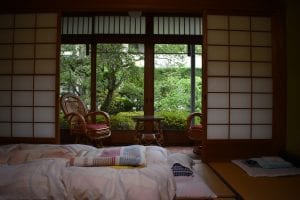
My lab keeps pretty helpful manuals on every piece of equipment and procedure on our lab wiki or in the shared computer files, which are helpful to have with me when getting help with new equipment because of the language barrier. I guess something that was unexpected the Maruyama lab was how difficult it would be to communicate with students in the lab. I know I can’t have expected to speak perfect English with them, but at least words needed for science/technical work would have been nice to share. Even though the Maruyama lab is so international, a majority of the Japanese students can only speak a bit of English, almost on par with my Japanese knowledge. So, a lot of Japan-glish conversations have ensued. I don’t know if this is the exact reason, but I know that many of the students in the lab are Masters students and so are preparing to get jobs at Japanese companies where English language skills aren’t completely essential. They also aren’t required to speak in English for their presentations to the group, only their slides have to be in English. So, chances for practicing English can really only happen with English-speaking international students like myself. I’ve done my best to help them practice their English and have tried out my Japanese in various conversations, but I still feel like the language barrier has made it difficult to connect with people.
Connecting with others is so important because collaboration is key in my lab, especially with my project. For the BN-coated nanotube project, one person might be tasked in growing nanotubes, another characterizing photoluminescence, and another coating the nanotube with MoS2. People become really good at their one job, but often don’t know much about others’ jobs in the project. This has made things difficult for me especially since I don’t have a direct mentor, which is different from my past research experiences. I often have to jump from person to person to person to finish one step in the process. From talking with a postdoc in my lab, people often just focus on one part of the lab’s research process. If they’re making solar cells, that’s all they do. And if they’re working on synthesis, that’s all they do. He said as a postdoc he’s expected to do multiple things, like grow his material and then figure out how to apply it to a device.
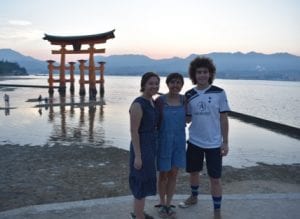
Like for my project, while they originally mentioned getting to coat the HACNTs with BN and then once that’s done manufacture some device, that plan was ultimately determined to be “too difficult” for me to complete. They wanted me to just focus on characterization and do characterization well. This change was a little frustrating given that there was time for me to learn the process, and even if I wasn’t the best at it the experience and the attempt still mattered to me. But looking at how research is conducted in the lab more closely, I think this reaction to me wanting to do multiple aspects of research was just a natural reaction to me wanting to subvert the traditional way of doing research in the lab, which is seeking expertise in multiple techniques to ultimately get good results. Trying new things isn’t discouraged, but is treated with caution, and often the request to “check the literature” and “are you sure there is time?”. If something seems difficult or hard, the answer isn’t exactly no, more likely
“that might be difficult” which is likely an indirect way of denying a request.
I find this probably to me the most noticeable difference I’ve experienced between US and Japanese research. Back in past research projects, I’ve always found encouragement to combine a lot of different fields together, tap into lots of new techniques, try things just for the sake of trying things. For me, it makes research an exhilarating process. This process of trying and failing I feel isn’t as much of a thing in my Japanese lab. Even the project I’m working on now, the BN coating project, was heavily researched and checked and largely expected to work before they started. While there’s nothing wrong with this method, I feel like I need sometimes the ability to be more flexible. Maybe other research groups in Japan function differently than the Maruyama lab, since it’s been around for so long and has well-established research goals. Still, while I would love to do research in Japan long-term, this freedom would be something I’d miss.
Research Project Update
Our TEM imaging got delayed for a few weeks because the sample required a lot more time polishing than we originally expected. The protective polymer layer on the sample (to protect from the e-beam) became detached when we were doing mechanical polishing, which is likely the reason for the extra polishing. This detachment was likely due to the quartz substrate. As the TEM lab usually makes cross-sections from SiO2, they were largely unfamiliar with the quartz substrate and how it would interact. We lost parts of image-able surface, so let’s hope what remains will look good once we do TEM! I’ll be making a few more samples next week just in case the first one we made doesn’t work.
In the meantime, I’ve been focusing on getting good Raman images of the HACNTs and the BN-coated HACNTs. This has actually proved to be difficult both because my unfamiliarity with Raman and the fact that the shared equipment Raman seems to have some problems. I was able to get a good image of the uncoated HACNTs which was good, but for the coated HACNTs I was unable to see anything, not even the G-band of the CNTs. I handed some samples off to a member of my lab, Zheng-san, who has much more experience with Raman. He’s never tried it before so he has no idea if it’ll work, so we’ll see and hope for the best.
I also started studying the protective nature of BN by oxidizing the nanotubes at high temperatures. I was able to apply two temperatures so far, 400 degrees C and 700 degrees C. From the SEM, nanotubes still remained for both the coated and uncoated after 30 minutes at 400 degrees C, but no nanotubes were on the uncoated substrate after 30 minutes at 700 degrees C. I wasn’t able to see the BN-coated HACNTs, so I might need to use AFM to confirm that they’re still there. Hopefully Zheng-san can figure out the Raman so I can get the Raman for coated/uncoated samples and see the decrease in G-band intensity (indicating the removal of CNTs from the surface).
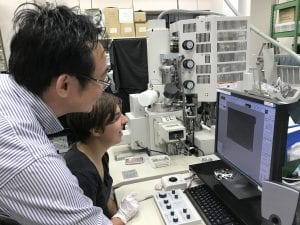
Sarah and Ogawa-san visited my last Wednesday as well which was really exciting! I had a great time getting to explain my work so far. It was also a good experience because Xiang-sensei emphasized how well I’d been doing, which helped to dispel any doubt that I wasn’t doing enough (it’s hard when you only have a couple of weeks to have a good project!). When we did the lab tour I even demonstrated how to use a SEM which apparently has never been done before during a tour.
Finally, I’ve started on my abstract for the project and my final poster, although content is still up in the air since we haven’t been able to get a successful TEM image. Hopefully we’ll have something soon and I can start wrapping up this project nicely!
Question of the Week
How is World War II taught in Japanese schools? At least in Hiroshima, we saw an exhibit in the Hiroshima Peace Park where there were quite a few clippings that focused on atrocities committed by the US against Japanese soldiers and civilians. It was heartbreaking, but also led me to wonder how the war is talked about and who is “blamed” per se for starting the war, continuing it, etc. I know from when I visited Berlin last year that Germany basically made it illegal to deny that the Holocaust happened. Has Japan done something similar?
- For more on this, see some of the articles under the WWII section of History in Japan on our Life in Japan resources page.
Week 10: Reflections on Japanese Language Learning
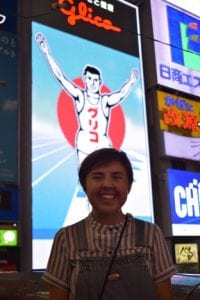
So far, my use of Japanese this summer has been entirely practical. Ordering food. Asking where things are. Figuring out experiment times. Things that don’t require too much thought to formulate. Where things start to break down is when I attempt anything beyond the formula of things I know how to say. While I studied Japanese for a year, it’s still hardly enough to get by. Especially as someone who enjoys being expressive, I struggle when I can’t say most shareable thoughts or feelings I have. I also feel isolated sometimes when I’m in lab and I see people laughing about something someone has said. I want to join in but feel like I would just confuse things. There are times that I feel like if I could have a magic button that could translate everything I say into Japanese I would pay for it in a heartbeat. Because as much as I want to become proficient of my own accord, I know for the time being I need the help from someone with far more knowledge of Japanese than me.
While that magic button doesn’t exist quite yet, Google Translate has been a good substitute. For example, yesterday I found myself stuck midway along the Shimanami Kaido, knowing that I wouldn’t reach Onomichi in time to catch my last train. I was a bit panicked because I didn’t want to be stranded here and worry about how I was going to get to lab the next morning. My distress made it hard to think straight in English, and definitely almost impossible to think in Japanese. I decided I was going to stop by a rest stop and ask the workers behind the desk about the ferry schedule, which I’d read about in a guidebook. I asked for the schedule from the nearest port, and she provided a schedule that was completely in Kanji. Therefore, I had no idea whether the locations on the schedule were places I should be heading to. So, I switched to another tactic, saying I needed to get to Onomichi. It was then that she became confused, because she was still thinking I wanted to take a ferry there. She produced a map from behind the desk for me to look at, and again it was in Kanji though somewhat understandable because I had a so-so idea of the geography of the islands. Then she took out her phone, and began typing furiously away at the keys. I studied the map, feeling the warmness of embarrassment as I tried to chart a course home while knowing I was still completely lost. I then saw her turn her phone towards me and that’s when I saw the familiar Google Translate interface. Basically what she had translated was something along the lines of “No boats go to Onomichi from here”. Hooray for understanding, but still not good for me getting home. At this point, the phone became our main line of communication, accompanied with some bad Japanese from me. I was able to eventually figure out there was a bus that would take me to Onomichi and it departed in a half hour. I also learned that I would have to return my bike before getting on the bus, but thankfully a return station was right around the corner. Everything figured out, I left, but not before expressing the few words I’ve mastered this summer “Sumimasen. Arigatou gozaimasu. Sumimasen”.
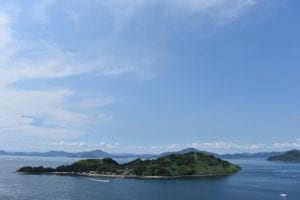
Looking back, there is a probably a way I could have said everything I needed to say in Japanese, and carried the conversation without needing Google Translate. While I greatly appreciate the app since it got me home safely, it feels a lot like a cop-out, something stopping me from actually practicing the language for sheer convenience (I know I mentioned wanting a button to help me speak Japanese, but that’s only when I don’t know how to say what I want to say). I think my issue is that in the heat of the moment, it’s like my mind goes blank. The vocabulary is there but it’s trapped in some part of my mind that I can’t access. I think most of it comes from just the stress to respond quickly which is required in verbal communication. When I’m writing Japanese and even reading Japanese (with good amounts of hiragana of course), I have a lot of time for everything to process and then come together. I definitely think my ability to think and respond quickly has become a lot better over the past ten weeks but it’s still not to the ability I’d like to be at. Yet, every time I’m able to carry a conversation longer with a minute, be it with a lab member
I think I need a combination of further Japanese study with language practice with native speakers. That’s something I will likely want to continue once I get back to Rice. Although I don’t have room in my schedule next semester for classes, I’ll definitely make good use of the Japanese Fellows being around! I also want to see if Houston has any conversational Japanese groups or classes I can join just to keep exercising this part of my brain. I know for sure that I want to keep practicing Japanese because being in Japan for the past ten weeks I’ve fallen a bit in love with Japan and would love to return someday for an extended stay. Hopefully when I make it back, I’ll only need Google Translate in extreme circumstances!
Research Project Update
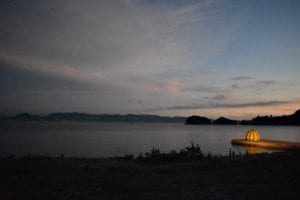
This week, we finally wrapped up the process of making TEM samples. When I started this process I had no idea how long it would take to go from intact substrate to a thin cross-section, but now I know that it can take upwards of four days to actually craft a sample. This is because you need to first, prepare a protective layer which takes time to solidify, then you need to mechanically slice, then mechanically polish, then chemically polish with the ion slicer, which takes the most time, then cut a viewing area, then mount it onto a carbon mesh and finally deposit amorphous carbon (for preventing charge-up). You could maybe do it in a quicker amount of time, but with how the UTokyo TEM lab works you’d have to start early in the morning since everything closes down by 6pm. I also think it took a lot more time because the TEM manager, Ito-san, is very focused on the process through which we do things. He would often make us practice each technique several times under his guidance before letting us work with the sample. I think this helped Arai-san and I perfect our technique, but sometimes I would become fidgety at the thought of practice because I was worried about time. I definitely think I’ll appreciate this experience more when I’m not rushing to get data in the last few weeks of the program.
The other thing I worked on this week was more Raman testing and this time I brought Zheng-san along since he has much more experience working with the machine. I had him test one of my uncoated samples and he ran into similar difficulty of poor spectra with too high substrate signal. This is still frustrating because from the literature they are able to get clear spectra of the HACNTs on quartz, but for some reason we’ve been unable to replicate. So, Zheng-san recommended transferring the nanotubes from quartz to silicon which I started working on on Thursday. I was able to transfer a few of the uncoated samples, but for the coated ones the PMMA did not seem to want to peel off the quartz which was strange. I checked the SEM and the nanotubes remained intact, so maybe it has something to do with BNNT-HACNT substrate interactions? I don’t really know but next week Zheng-san said he could come help me with the procedure so it could be related to how I’ve set things up. So we’ll see. Next week I’ll be able to try Raman on the two samples I was able to successfully transfer, and we’ll see if I can get a signal.
I’m a little nervous about time since I only have two weeks, but I think I’m on track now to have enough data to present in a poster. If I can just get the Raman and TEM, I think I’ll be set. Wish me luck!
Question of the Week
Japan overall seems like a pretty fit country, but I’ve noticed that a lot of people around me consume considerable amounts of processed food and meat. I’m just curious at how healthy modern Japanese people are overall compared to other developed nations and whether they’ve been dealing with any diet-caused health epidemics like the US.
- In Tokyo, in particular, people walk a lot (as you know), so that keeps people pretty lean, but I would say the Japanese diet is still one of the healthiest in the world. The meat they do consume is not as much red meat as in other countries, but what I think really makes a difference is beverages. Almost everyone drinks unsweetened tea instead of soda. The other critical thing is they seem to have their portion sizes in check. However, an increasing problem in Japan is metabolic syndrome, or “pre-diabetes”.
Week 11: Interview with Japanese Researcher
Interview with a Japanese Student(s)
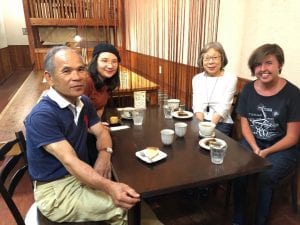
I think the starkest difference between the lives of American undergraduates and Japanese undergraduates is that the ones that I talked to don’t live on their respective campuses. They all commute to campus in some way, either from their parents’ homes or from apartments near the campus. So, while “commuter” campuses like that definitely exist in the United States, most of the people that I know in the US live on their campus or at some point have lived on their campus. Being on campus in some respect has been a key part of my experience as someone at a four-year undergraduate institution, as I can remain connected to the social vibrancy of the college community. College seems to be beyond just schooling, it’s almost a definitive lifestyle, where most everything you do is impacted in some way by being surrounded by other young people.
It seems to surprise my Japanese undergraduate friends when I speak about attending social events with my college or doing things other than studying or working in a lab. A lot of the students I’ve talked to find their lives revolving around school. I remember earlier this summer trying to make plans with a friend from Kagoshima, Japan who is currently studying at Keio. I reached out to her in mid-June to make plans…and the date she gave me was end of July. When we met up finally, I figured out that she chose this date because it was the date of her last exam of the term, so she felt like she could finally relax. All her other time she felt needed to be spent on her schoolwork. This didn’t mean that she does nothing but school, she’s involved in quite a few clubs related to her interests, but school is the major focus of her life. While I’m busy with this internship, I still try to make time for people in my life because I feel like I go crazy when I just do one thing or don’t socialize. Even during the school year, I make sure I schedule time in my life to be with others. It might mean a few less hours studying, but I feel like it’s important to my experience as an undergraduate.

While I can’t say that Japanese students never do anything but school, school remains one of the most important part of their lives. It’s about studying to do well on the exams to get into a good college and then to get a good job or take more exams that can lead to a good graduate school. The US Education system is starting to emphasize more of a holistic view on the person, meaning that yes, we want smart people, but also we care about what the person does outside of school. When I mentioned this holistic focus to some of the Japanese Fellows, they mentioned how they really wished exams weren’t as big of a part of their lives because they take so much time to prepare for. And they really do. My other friend I met in Kagoshima is spending a whole year taking classes just to prepare for exams so she can get into medical school. I know that people spend a year preparing for the SAT, but it’s not to the degree of spending 6 days a week for a year getting ready for exams that decide way more of the rest of your life.
The Japanese students I’ve met I admire more than anything. Their commitment and drive are respectable, and definitely inspire me to also excel. But I don’t think I could commit myself solely to academics, and beyond that, to exams. For me, I think teaching to a test limits one’s ability to try new things or explore creativity. You learn something to the degree you need it to pass, but beyond that, it could often just not be used. It’s why, as one student put it, they study English for 8 years and yet when the time comes to use it many Japanese people can’t speak or feel like they can’t speak. From attending a Japanese English class years ago, they learn weird grammar structures (it was hard for me to understand!), pronunciation, emphasis, but almost little to no conversation skills. I don’t know if the Japanese school system is even trending away from this type of learning, but I’m curious if the changes in the US will cause changes in Japan. I guess I’ll have to see.
Interview with a Japanese Researcher
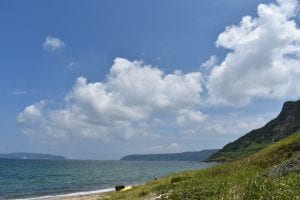
For my interview with a researcher, I really wanted to chat with a female professor at the University of Tokyo, just because my lab is so male dominated at all levels, and women are only represented among B4 and graduate students. So, I chatted with Erik, and he recommended Dr. Kanako Harada, a professor in mechanical engineering. When we talked, he actually mentioned that she was the only female faculty he knew still at Todai. I mean, that’s not surprising, when you look at Todai’s numbers and see that out of 1,268 professors, only 86 are females. Out of associate professors, that ratio is better at 112 female professors out of 941 total. But that’s still only 12%, of all programs. I wasn’t able to find any numbers on engineering, but I assume that percentage is much lower.
Sadly, due to scheduling she was unable to do a physical interview, but when I reached out to her with some questions she responded within a day which I was thoroughly impressed by. So this is a synthesis of what I learned from our digital interview.
She was inspired to study engineering because in high school she watched a whole TV program about medical prosthesis. Inspired, she wanted to figure out how she could do that type of work. She also mentioned how the work inspired her because through it she could improve people’s general welfare. That comment resonated with me because I also am passionate about nanotechnology and materials science because I’ve read about researchers who’ve made low-cost, powerful devices to create point of care HPV diagnostics or power homes through solar through clever materials design. This might be a bias of mine, but I often find a lot of female researchers who talk about how their research can impact people and improve their wellbeing. A good amount of the research I’m inspired by comes from labs run by women, because their work is not just advancing science, but ensuring sustainability as well.
She spoke that she went to Todai and got her PhD at Waseda, but really never intended to go that far with her academics. Academia, ended up being the only place where she could work on what she was interested in. But, at the end of our digital interview when I asked about her advice for a young, female researcher, she told me I should not go into academia. I found myself struggling at what to think about those two pieces of information. Academia, to me, feels like the only place I can do what I want to do. My interest lies largely in organic electronic materials, like carbon nanomaterials and conjugated polymers, and in industry this area is still largely dormant. Maybe someday, companies will emerge that can capitalize on these materials and provide work outside of academia, but now that’s not the case. Who knows, maybe years down the line my path will change, but at this point I do really want to become a professor and it’s a bit discouraging to hear that sort of comment.
Research-wise, she’s extremely busy coordinating a project of more than 150 researchers (WOW!). While she does like this work, she feels that it is extremely exhausting because of how much she has to do. The Maruyama-lab must be an exception to the rule, because she said that she doesn’t have technicians to help her out, only administrative staff. But because of limited language skills, these administrative staff aren’t as helpful when things must be done in English. As English becomes more of the international research language, it becomes harder on Japanese professors who must coordinate without much support from other people. I feel like she’s right in saying her time is a little limited, because at least in the US everything can be done in English no matter who we work with. I still feel like in general professors are overworked, but it’s interesting to hear her mention it in her research environment as an extra burden.
She seemed happy to see me doing international research because it’s something she greatly values. She did a post-doc abroad and makes sure to keep collaborating internationally with researchers from all over the world (France, Brazil, Mexico). Her lab also sounds like the most diverse one (at least in japan) that I’ve heard of so far, hosting students from Mexico to the Philippines to China. This is so interesting because I’ve only really been exposed to international researchers from China, France, and India at Todai, and so it’s good to know that researchers are working hard to attract people of diverse backgrounds. I’d be interested to know a break-down of all international student populations of at least Todai, and compare it to places in the US to see similarities and differences.
But working more internationally, like with the difficulties in admin she mentioned, also has negatively impacted Japanese education in her opinion. She says there has been an increased focus on general “communication” for STEM students. And as these class offerings have increased, she’s found basic academic course offerings have decreased. Those trends overall are of concern for her. I can see where she’s coming from though, because scientists need to be very informed people, but I’m also glad to hear that Japan is focusing on science communication. From experiences in the US talking about research, so many people have false perceptions about science because scientists are doing a poor job at communicating their work. Often sensationalized depictions are what are displayed in media, which greatly concerns me when we’re dealing with major problems like climate change. So, while science shouldn’t be sacrificed at the expense of communication, both need to be there if we are to tackle immense scientific problems.
The last set of questions I have were about gender in science, and her experiences. To my surprise, she really didn’t seem to have run into too many problems. It’s actually a good time to be a female researcher in Japan because there’s such a big focus on getting women into academia. So, there’s a lot of positions that are being made available just to women. While I haven’t heard of this being done so openly in the US, I know that increasing the number of female faculty in science and engineering is important to many top US research universities, including Rice. From my own research, I know a lot of graduate programs in my field, Materials Science, still consider women an underrepresented minority, even if we’re more represented than in Japan. And, as has happened in the US, young male researchers are often discontent at efforts to create gender balance. I wasn’t able to ask this, but I wonder what Dr. Harada feels about being partially selected because she’s a woman. I know she surely doesn’t mind the opportunities since she is able to speak about her work at a number of conferences, but I wonder if she deals with any imposter syndrome as a result. I know I’m personally sponsored by several scholarships that are for women in engineering, and although I know I’ve earned them, I still feel sometimes like I don’t deserve them and got them just because I was female.
Dr. Harada actually had a baby recently, and was able to keep working because she was able to find a nursery school. But doing so, she mentioned, was extremely difficult, and I’m not sure if Todai helped her at all through this process. She could barely do it, but was able to because of her position. She mentioned that if she was a post-doc and had a child, she would not have been able to continue doing research because it just would have been too much time. I know from reading articles about the fight for gender balance in Japan is that it is incredibly difficult to have children and work because the support systems still aren’t largely there. You really have to want to work and have a job that supports you to be able to be a working mother. The US is still not perfect in terms of maternity leave and support for families, but I still feel like there are quite a lot of graduate students and post-docs with children who are able to make it work. For gender balance to truly be reached, Japan will have to do more for young mothers, and I’m interested to know more about any efforts being done.
Overall, while this assignment was stressful, I’m glad we had it and that Dr. Harada was able to make some time for us to chat. I learned a lot from the interview, and it’s definitely something I’ll be reflecting on as I consider the research career path, and even doing further research in Japan.
Step Three Question of the Week
I know Japanese labs have quite a bit of money, but I’m curious where a lot of the funding comes from. Is it the government? Companies? Is Japan focused in on the ROI of research or more about discovery? The US is struggling currently with research funding, and I wonder if Japanese researchers also feel like they need to battle for money. Being in the Maruyama-lab, money doesn’t seem like too much of an issue, but the lab is also very established. What is it like for beginning researchers?
- Most research in Japan is funded by the government and seeks to support discovery and innovation. The government. Discovery. Todai in particular is very well funded, so it’s kinda like visiting Stanford and concluding that US universities have very nice facilities.
- Funding from government for research is never easy to come by, but there is a perception that Todai gets half of the pot. Half of the remaining money goes to Kyoto University, and the remaining quarter is left for everyone else. It may not actually be that bad, but that’s the feeling anyway.
- Japan spends more that the US in terms of % of GDP (third most overall behind Israel and Korea), so the research budget is quite respectable. For more, see chapter 4 on Research & Development: U.S. Trends and International Comparisons in the National Science Board’s 2018 Science & Engineering Indictors report.
- Most beginning researchers belong to a lab that is run by a senior researcher (e.g., full professor). The benefit here is good access to equipment and the junior researcher is usually a co-PI on projects led by the senior researcher. There are also certain programs designated to fund junior researchers, so you start there and work your way up.
Research Project Update
This week was busy with two vital parts of my project: preparing samples for Raman and TEM.
For Raman sample preparation, I spent Monday finishing the process of removing PMMA from the samples I’d transferred last week. After heating for a few hours, I checked SEM to see that my nanotubes were still largely intact. I checked the Raman the next morning and saw the G band on my sample for the first time which means that Silicon is the ideal substrate for doing Raman measurements for these horizontally aligned nanotubes. It takes more work, but the spectra I got were worth it. On Wednesday I continued the process of transferring the nanotubes and finished transferring all the uncoated samples. But, I still ran into issues in getting the BN-coated tubes to liftoff the substrate, even after I left the samples in base for half an hour, three times the designated time for that step. After chatting briefly with Inoue-sensei, this is an issue they’d come across before and is largely due to “sticky” samples or samples with strong substrate interaction. The only way to solve the problem was to leave the samples in for longer. So I attempted that, leaving a sample in overnight, and found that the next morning I was able to transfer with only a bit of difficulty (meaning I had to use tweezers to fully remove from the substrate). The rest of the BN-coated samples only needed 3 hours to begin detaching and I was able to finish transfer Thursday and remove the PMMA fully on Friday. From just visually glancing at my samples, it appears to be that there is still something (a different coloration) on the Silicon for temperatures above 400 degrees Celsius for the coated samples which can’t be said for the uncoated samples. So this is good news, meaning that the coating is protecting the nanotubes in some way. Only Raman can tell if any nanotubes remain and I’ll be spending 4 hours with the machine on Monday to fully analyze my 10 samples…it’ll be a blast.
We finally were able to do TEM on the cross-section samples we prepared, and the results weren’t exactly what we wanted but were pretty informative. The first sample was broken where the nanotubes should have been, but we still learned that BN not only coated the nanotubes but also coated the substrate. This is really exciting because it means the BN can grow on quartz without a catalyst. The BN coating on the surface also explains how hard it is to etch away the samples from the surface. But there were no nanotubes on this sample so we had to move on to our second sample. On our second sample, it took some time to find because the layers were a little too thick for TEM, but we found some contrast that repeated every few hundred nanometers. These turned out to be our nanotubes. Some appeared to have no coating and others had coating, so it seems as if the method was inconsistent. Our angle on the nanotubes was also off since it’s basically impossible to get a perfect perpendicular cut, so that also made it difficult to tell if the tubes were coated as well as what the coating looked like. So, we decided we should attempt to thin the sample to see if we could see the nanotubes clearer. But thinning the sample resulted in a lot of charging, and coating with carbon to try and prevent charging resulted in irreparable damage to the sample. So…basically both our samples ended up being ruined in some way, which means we’ll have to start from scratch, but this time with a different method. We’ll be working with a lab technician to prepare a few samples via FIB, Focused Ion Beam, and see if this method can give us a clearer image of what’s going on with the coating. We’re cutting time a little short, but hopefully by next Thursday I’ll have some idea of the coating. As always, wish me luck!
Return to Top
Week 12-13: Final Week at Research Lab & Re-Entry Program
Final Week of Research
My final week of research in Japan actually couldn’t have gone smoother. I’ve read of past Nakatani Fellows rushing to finish at the end, working 12, 13, of 14 hour days, and was sure that that would be me. But, I found myself collecting my last piece of data Thursday evening at my final TEM session with Xiang-sensei. And like that, my project was done. I felt like I’d just begun working, as there was still so much we didn’t know about the coating morphology. It was a strange moment of wanting to keep going but knowing that my time was up.
Overall, I spent my last week working on three main things, Raman spectroscopy of heat-treated coated and uncoated nanotubes samples, Focused Ion Beam (FIB) sample preparation and TEM, and finishing my poster (analyzing data, adding conclusions and next steps, etc). For once, everything went smoothly schedule-wise, even if the data is still not where I’d like it to be. The project has a lot of potential, especially since we could determine that the FIB method of sample preparation delivered a clear, identifiable interface for nanotube cross-section imaging. Although we weren’t able to see the coating morphology, we were still able to identify a circular contrast of similar size (6nm) to what we’re expecting from the boron nitride coated horizontally aligned carbon nanotubes. We were also able to find that the boron nitride coating increases the carbon nanotubes resistance to oxidation by heat, which is exciting for thermoelectronics applications for the material. I can’t wait to see where the Maruyama lab takes this project, and am looking forward to continue remotely collaborating with the group especially when they get ready to publish these results.
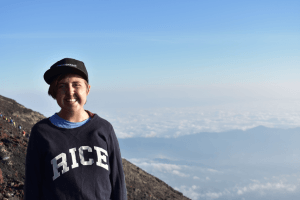
Outside of lab, I committed myself to enjoying Tokyo to the fullest, one last hurrah before I had to fly home. On Tuesday, I met with Hannah Jackson, a Rice University student doing research at Tokyo Institute of Technology, and with her graduate student we visited the Eco Edo art exhibit and got to see some of the most beautiful aquariums I’ve ever seen. Apparently, many of the goldfish in this exhibit had been bred specifically for this exhibit, and that their pedigrees and bloodlines were highly prized. Wednesday, I went out to eat…mostly because I didn’t want to buy food and cook. Gosh I’m going to miss Tokyo’s vegan food, even if it’s hard to find it’s so delicious. Thursday was a vegan meetup, my last one, where I got to experience one final delicious buffet and meet a few Japanese women who just recently went vegan! Finally, Friday I got to go out to dinner with my Tokyo friends and then welcomed Hana into Tokyo to spend the night before Fuji.
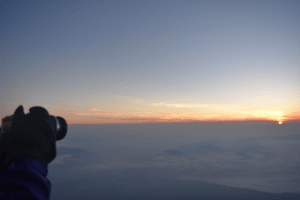
Oh Fuji…what an experience. Getting there probably tops my list of stressful traveling experiences in Japan. First off, I scheduled a time for everyone to meet at Shinjuku Station to get on the train, and even though I’d been in the station countless times I got lost. My main fault was that I got my platforms confused and accidentally led Hana and I to the wrong place so we missed the train. This was what we thought was our last opportunity to get to Fuji…until there was a blessing in disguise in the form of an express train. While it was a bit more expensive, it was worth it for getting there on time. The rest of our trip was a bit smoother even with a pretty crowded climber’s bus.
And then we began, the climb, the long, 7 hour climb. Now despite my lack of hiking experience, I actually was able to summit first out of our group. This was largely because I hated waiting in the long lines of climbing groups, and liked instead to take some more, alternative routes. Once I made it to the top though, I almost regretted my speed because it was so chilly at the top. It was a long two hours till Sunrise, but it was worth it. As the sun appeared above the horizon it seemed like the world just appeared before my eyes. I was barely awake but happy to feel like I accomplished something. Sadly, I hadn’t actually finished climbing Fuji because we actually had to get off the mountain. That was worse than climbing up for me because all the ground was soft, slippery sand. I probably fell on my butt a total of ten times over the four hours. So maybe, the metaphor shouldn’t be about summiting a mountain as evidence of success but rather getting off the mountain.
Re-Entry Program at Rice University
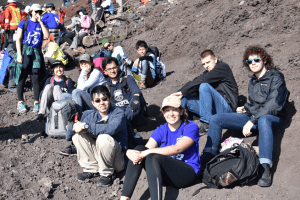
It’s crazy to think that I spent twelve weeks abroad in Japan, because coming back to Houston it almost felt like we never left (other than all that jetlag). We were back at the Wyndham, going to Rice for lectures, hanging out with the Fellows around Houston. It was like nothing had changed since May, except for me. Cheesy, I know.
Personally, I feel like I’ve just become more confident in myself. This summer was my first experience living on my own, living without a lot of people around me all the time, and making myself a work schedule that I could stick to. And while I struggled with things like loneliness and staying responsible for my wellbeing, I think I was overall successful. I made new friends and learned a ton of new delicious Japanese recipes and also thrived in my research lab despite my many setbacks.
I feel like overall, I still love Japan, but after coming back am more conscious of things which I hope Japan can improve. I think there are a lot of social issues, especially those related to women and gender issues, that could be better addressed.
When I think about what I miss about Japan, I really do miss my commute on the metro. The convenience and ease of getting around, the freedom having the whole city be reachable for just a few dollars. That’s something that’s just not possible here in Houston, where a car is a necessity. And while I returned to work at my research lab at Rice doing work with soft materials that I love, I miss my lab mates at the University of Tokyo and miss the ease of doing research there. I had to get more lab equipment added to my list of those I could be trained from Rice’s shared equipment authority system, which took a lot more time than just asking a labmate to train me on equipment we already had in our lab.
I think this summer in Japan confirmed that no matter how hard the research is, no matter how many times I fail, I love research. I love the idea of getting to go to work every day and find out something new. Every day is an adventure where I’m somewhat in control of the journey. And I really did love getting to work with a new, innovative, cutting-edge material that was only available in the Maruyama lab. While I’m not sure if I’ll continue to work with carbon nanomaterials, I know for sure that I want to be working on new materials, because I think I do research my best when I feel like I’m pushing the barriers of innovation. I like asking questions of “Why not?” when people doubt my ideas, because I believe anything is possible if you have the right team.
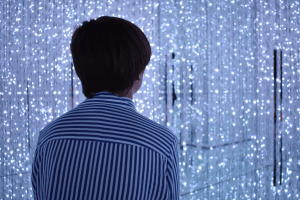
Because I only seem to be falling deeper and deeper in love with research, I really engaged with the sessions during the Re-Entry program about graduate school, with my favorite being the graduate student panel. It’s always inspirational for me to hear from me people who are in a place where I’m aspiring to be, because I want to know and learn from them on how I can get there too.
What would you tell others about the Nakatani RIES Fellowship Experience today? Well…I’d say there’s no other program like it in the world. While there are programs that support undergraduate research abroad, I feel like none support students to the degree that Sarah and the Nakatani Foundation does. We get to have so many amazing experiences, language classes, constant mentorship and support. And we get to spend a summer in JAPAN doing something we love.
Final Question of the Week
How do I keep involving myself in international research even in graduate school?
- Great question. First, check out some of the Other Related Programs for U.S. Students where we list a wide array of opportunities worldwide – many open to graduate students as well as undergraduates.Be sure to ‘Like’ or follow our Nakatani RIES Facebook page where we regularly post updates about programs with upcoming deadlines that may be of interest to alumni or students interested in international research in general. Some programs open to graduate students that may be of particular interest include:
- Australia Endeavour Leadership Program
- Austria Institute of Science & Technology Internship
- Erasamus Mundus Master Nanoscience & Nanotechnology
- France: Chateaubriand Fellowship
- France: French-American Doctoral Exchange
- Fulbright U.S. Student Program
- Apply for a general Fulbright to any country or STEM specific grants
- Great opportunity to do research abroad in a country/lab where your advisor has active collaborations
- Click here to review list of current STEM specific grants
- Germany
- Germany/DAAD All Opportunities for Graduate Students
- Germany DAAD RISE Pro Program (Deadline is usually in December for following summer)
- Technical University of Munich Practical Research Experience Program
- Japan
- JSPS Fellowships for Research in Japan
- Okinawa Institute of Science & Technology Research Internship Program
- Tokyo Tech Summer Program (Deadline is usually in January for summer)
- University of Tokyo Engineering Summer Program (must be a student at a partner university)
- Singapore International Graduate Award
- Switzerland: Think Swiss Research Scholarship
- Graduate students also often have the opportunity to do research abroad if their advisor has active international collaborations with colleagues overseas. For example, in Prof. Kono’s lab almost every student spends some time doing research experiments in Japan with his collaborators there. So, that is one question you probably want to ask potential advisors or students in the research groups you are interested in when considering which graduate program or advisor/group to join. “Do you have active international research collaborations and, if yes, where?” “Do students in your group ever have the opportunity to collaborate with colleagues overseas or go to your collaborator’s labs overseas to do research?”
- Finally, if you get an NSF Graduate Fellowship, they have a new GROW: Graduate Research Opportunities Worldwide supplement for fellows to apply to do just this – international research abroad.
Final Research Poster & Project Overview
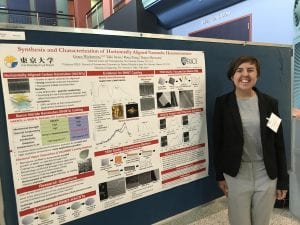
Research Project Abstract & Poster: Synthesis and Characterization of Horizontally-Aligned Nanotube Heterostructures (PDF)
Host Lab in Japan: The University of Tokyo – Dept. of Mechanical Engineering, Maruyama-Chiashi Laboratory
Host Professor: Prof. Shigeo Maruyama
Mentors: Dr. Rong Xiang and Taiki Inoue
Introduction: Horizontally aligned nanotubes are a morphology of carbon nanotubes, typically grown on quartz substrate as they strong interaction between the quartz and the nanotube ensures nanotube alignment. Nanotube alignment ensures dense films that are typically 1-2nms thick. Nanotubes grown horizontally often have a low defect ratio that is good for the conductivity of the resulting nanotubes. This makes this morphology extremely promising for transparent displays, field effect transistors, and nanoelectronics. But carbon nanotubes are limited in their applications because of their sensitivity to their environments, meaning that a method of protection is greatly desired.
Boron nitride is a promising material for protecting carbon nanotubes due to its high oxidation temperature. Recently, the Maruyama-Chiashi laboratory has demonstrated for the first time the co-axial growth of boron nitride nanotubes on a variety of morphologies of carbon nanotubes through Chemical Vapor Deposition (CVD). The coating morphology of boron nitride has a direct impact on the device applications, as co-axial coating is expected to not only ensure the best protection from oxidation but also enhance the electrical properties of the carbon nanotubes. Morphology can be confirmed through Transmission Electron Microscopy (TEM), but TEM has never been demonstrated before for horizontally aligned carbon nanotubes. For this reason, we focused our study on the following primary research question: “How can we observe through TEM how BNNTs coat HACNTs?”. Due to additional time, we were also able to investigate a secondary research question, that being “What is the direct impact of this coating mechanism on the mechanical/electrical properties of the HACNTs?”
Big Picture: Carbon nanotubes are promising for a wide-range of electronic devices, but their sensitivity to their environments greatly limits their applications. If we can find a protective material for the carbon nanotubes, we will be able to see much more possible applications for CNT devices like, for example, in thermoelectronics.
Approach: To study the coating morphology, we synthesized dense (~10 nanotubes per micrometer) samples of horizontally aligned carbon nanotubes via 25-minute growth in the CVD that were then moved to a second CVD and coated for three hours with the boron nitride precursor, ammonium borane. Once synthesized, coating evidence was obtained through scanning electron microscopy, atomic force microscopy, and Raman spectroscopy. Once coating had been confirmed, we attempted two methods of TEM sample preparation, the conventional method which involves mechanical slicing and polishing followed by ion slicing, and the focused ion beam method, which prepared sample fully inside of the FIB machine. TEM was used to study the samples, and polishing was done further as needed.
To study coating integrity, coated and uncoated samples were placed in the furnace and heated to several temperatures, 400, 500, 700, and 800 degrees Celsius, for thirty minutes in air. SEM images were taken before and after burning to study morphology changes. To perform Raman spectroscopy on the samples, a PDMS transfer procedure was used to transfer the samples to silicon in order to avoid the noise from quartz substrate, and then several spectra were taken of the sample.
Results and Discussion: As this was the first time coating of horizontally aligned nanotubes had been studied in depth, evidence of coating had to be confirmed before moving to the TEM study. From AFM, SEM, and Raman, there were several pieces of data which pointed strongly towards some evidence of boron nitride on the sample. From AFM, we found a height increase in the line profile of the carbon nanotubes. As these nanotubes grow flat on the substrate, a height increase correlates with an increase in diameter, meaning there is something on the surface of our nanotubes. From SEM, we found that coated nanotubes were much harder to focus than uncoated samples, which would be likely if the samples were coated as boron nitride is an insulator. Finally, from Raman spectroscopy, we found that not only was the g-band signal of the carbon nanotubes retained post-coating, but that after oxidation at 500 degrees Celsius for thirty minutes a boron nitride peak could be observed in the spectra. From this evidence, we can conclude that boron nitride coating likely occurred.
We first attempted the conventional method of sample preparation and found that it was a difficult process with many steps required that could potentially destroy our samples. When imaging in the TEM, there was not a clear interface between the G2 protective polymer layer and the quartz substrate, making it difficult to identify the location of the nanotubes. Only on one of our samples were we able to obtain some weak contrast of nanotubes, and observed both uncoated horizontally aligned nanotubes and boron nitride coated horizontally aligned nanotubes. We also interestingly observed BN layers on the surface of the quartz. Still, this sample was too thick to properly observe the nanotubes, and the cross-section was not perfectly perpendicular to the length of our nanotubes.
Because of the many problems with the conventional method, we attempted Focused Ion Beam to prepare a TEM sample. This sample had a much clear, identifiable interface. The sample was still too thick for proper imaging, but we were able to observe a weak circular contrast of around 6.5 nm, around the size that our coated nanotubes should be. Further polishing is needed, but this method proves to be the most promising for creating cross-sections of coated horizontally aligned nanotubes.
Finally, the boron nitride coating is able to protect the horizontally aligned carbon nanotubes from oxidation even up to temperatures of an impressive 800 degrees Celsius. This means that regardless of coating morphology, the boron nitride coating can protect the horizontally aligned nanotubes.
Conclusions and Future Research: This study demonstrates one of the first examples of cross-sectional TEM of horizontally aligned carbon nanotubes. While coating is observed in TEM, due to trouble with our samples the morphology remains inconclusive. FIB is the best method for creating cross-sectional TEM samples of the coated horizontally aligned carbon nanotubes, and so this method will continue to be used for future TEM study of these samples. Finally, the boron nitride coating regardless of morphology protects nanotubes at high temperatures, which makes high temperature applications like thermoelectronics possible. Our future work will focus on continuing to make cross-sections through FIB and characterizing via TEM until conclusions of coating can be made. Once morphology is known, we can begin investigating device applications like FETs, and explaining resultant properties from coating.
Follow-on Project
At the moment, I know for sure that I will be assisting in advertising the program at Rice University’s Discover Research Fair, which is actually being held the day this report is due (woot woot!). I know there is also a Summer Research opportunities fair at Rice in the Spring where I also expect to assist in promoting the program (if the timing works out).
Beyond advertising the program to future participants, I plan on seeking out opportunities where I can present my research from this summer. I’m not sure where yet, but a few I’m considering are Materials Science and Technology and various events held by the National Council on Undergraduate Research. I’d love to know of more events where past Nakatani Fellows presented though!
Tips for Future Participants
Preparing for Research Abroad
- Ask your host lab if they have any papers they’d like you to read before you come to Japan. Doing this before you arrive can help you so much when you start the program since you’re expected in the first couple weeks to be reflecting critically on your assigned research project.
- Also, reading papers can help you to look intelligent and prepared when you first meet your host professor and research mentor, which is a sweet bonus!
What Gifts to Bring
- FOOD. Just grab something that looks super American and people will be all over it.
What to Eat (for Vegans!)
- So I had a different relationship with food than most people in Japan due to my vegan diet. Being vegan in Japan, not gonna lie, is difficult, but if you come prepared it’s totally do-able!
- Before you go, make sure to learn the kanji for different food items so that you can identify them quickly on packages to check if they are/are not vegan. That saved me many times from buying something that might look vegan, but actually have fish.
- And if you’re in a city like Tokyo, you’re in luck because there’s actually not only amazing vegan restaurants but also a pretty strong vegan meetup group (meetup.com, Tokyo Vegans, look em up). My recommended restaurants are: T’s Tan Tan, Ain Soph Ripple, Ain Soph Journey, Rainbow Bird Rendezvous, and Nezu no ya (located conveniently right next to UTokyo)
What to Buy in Japan
- FOOD, literally I just bought non-perishable ingredients that I could take back to the US because I knew they would be super expensive here.
What to Do in Japan
- I think I was spoiled because I was in Tokyo, but I honestly loved going to summer events like Matsuris and pop-ups. Tokyocheapo.com is a great resource for things that won’t break the bank.
Places to Visit in Japan
- Kyoto, Osaka, and Tokyo are definitely really nice cities to visit, but honestly the most fun I had this summer was going off the “beaten path” per se and visiting places like Naoshima, Nikko, Mt. Koya, and Kanazawa.
- Just see what Japan has to offer (which is a lot) that aligns with your interests and go from there. If you love art and nature, I recommend Naoshima. Want to know more about another part of Japanese history? I recommend Nikko, Mt. Koya, and Kanazawa.
